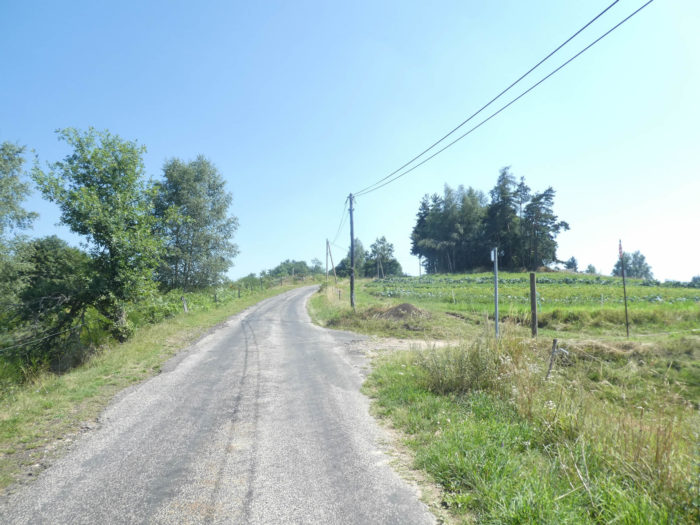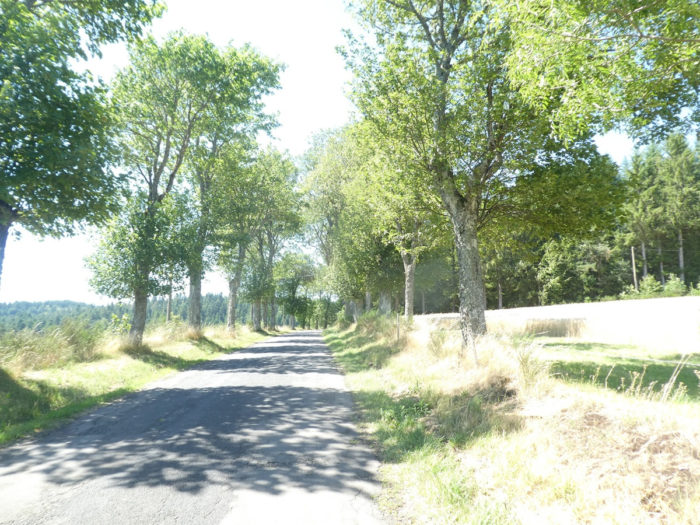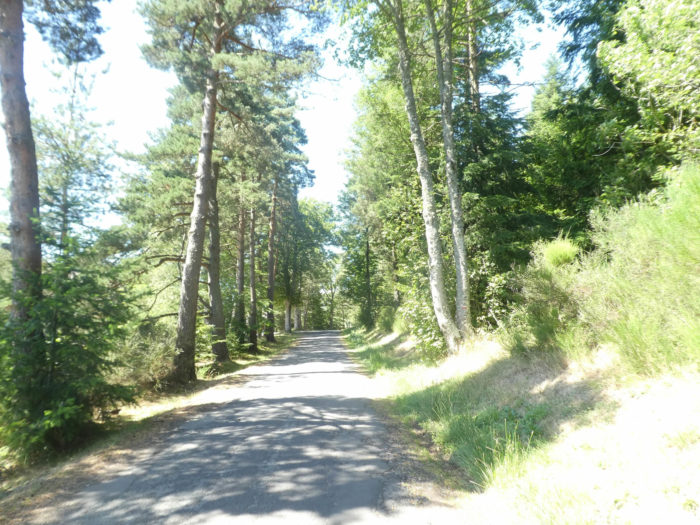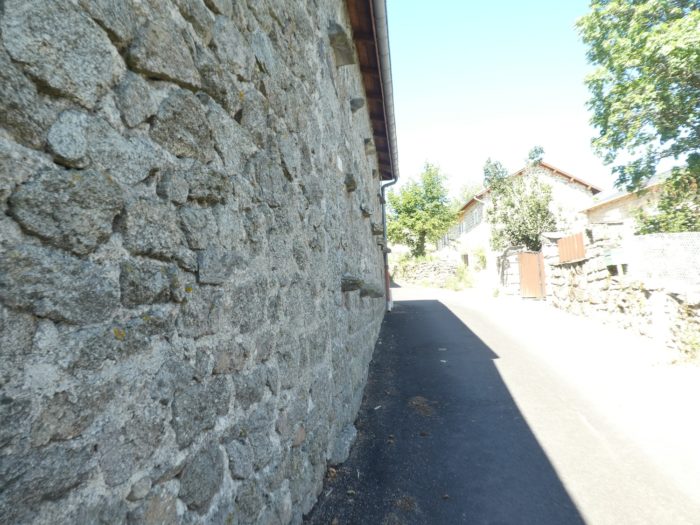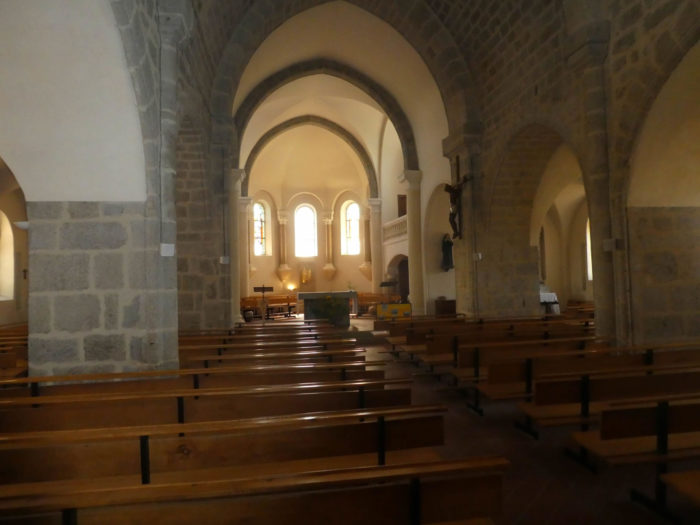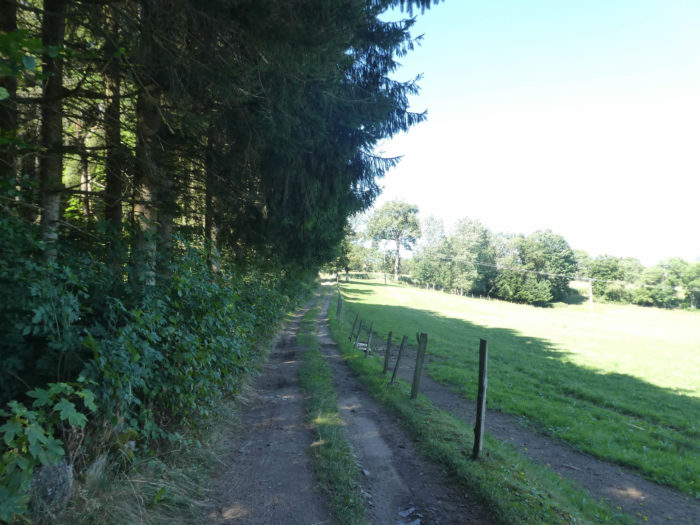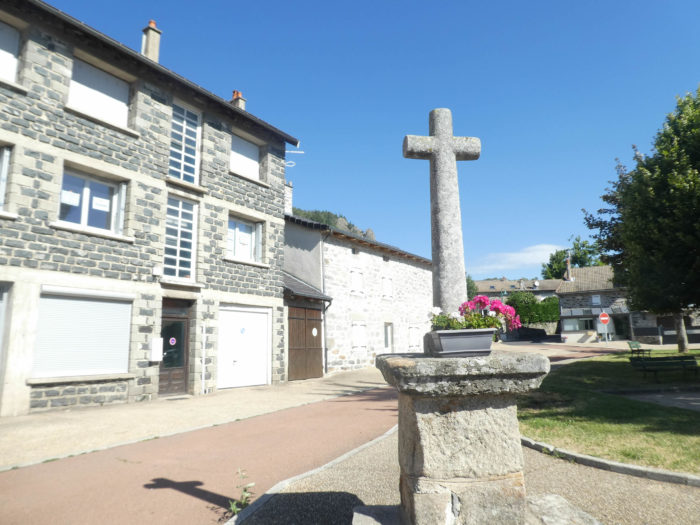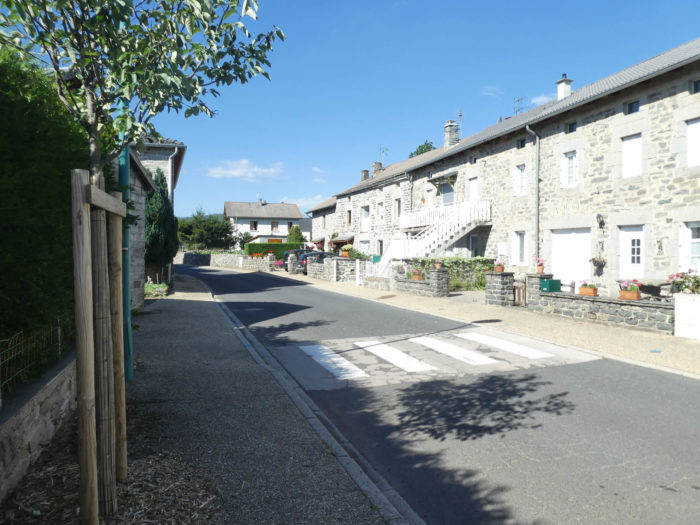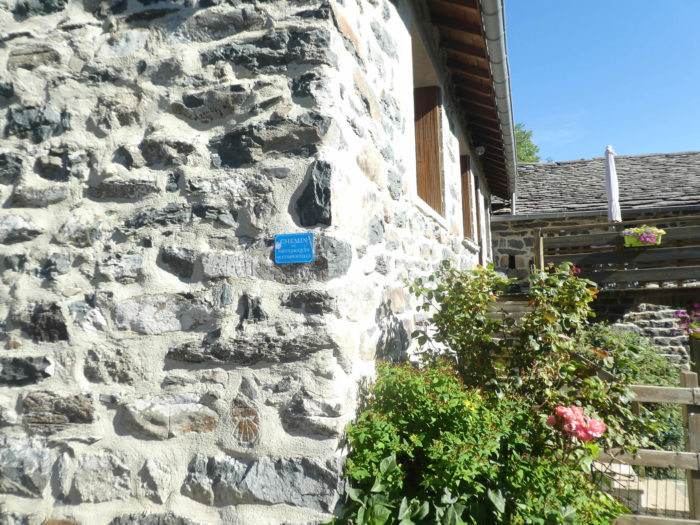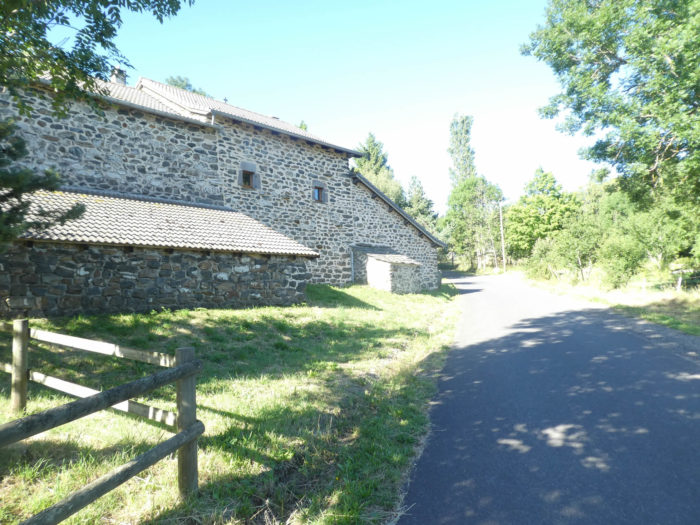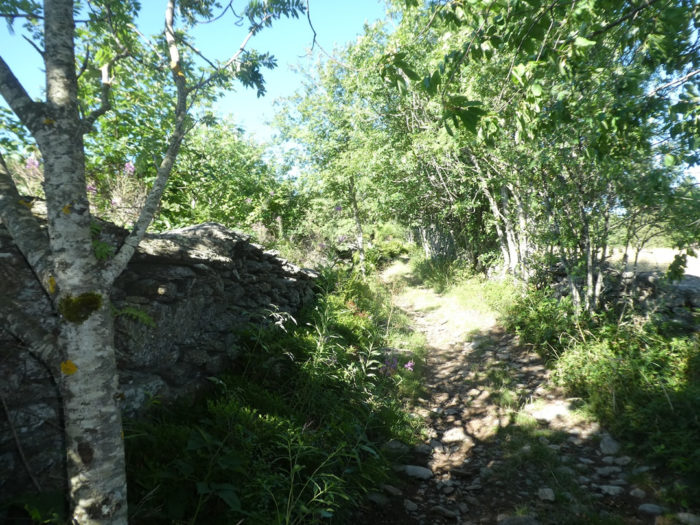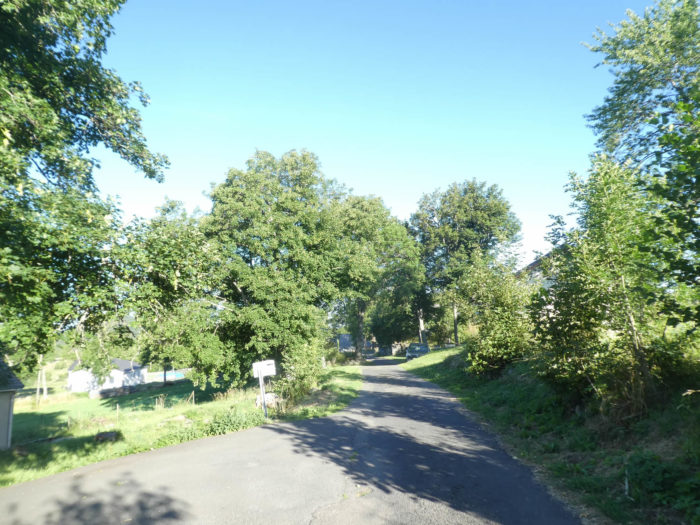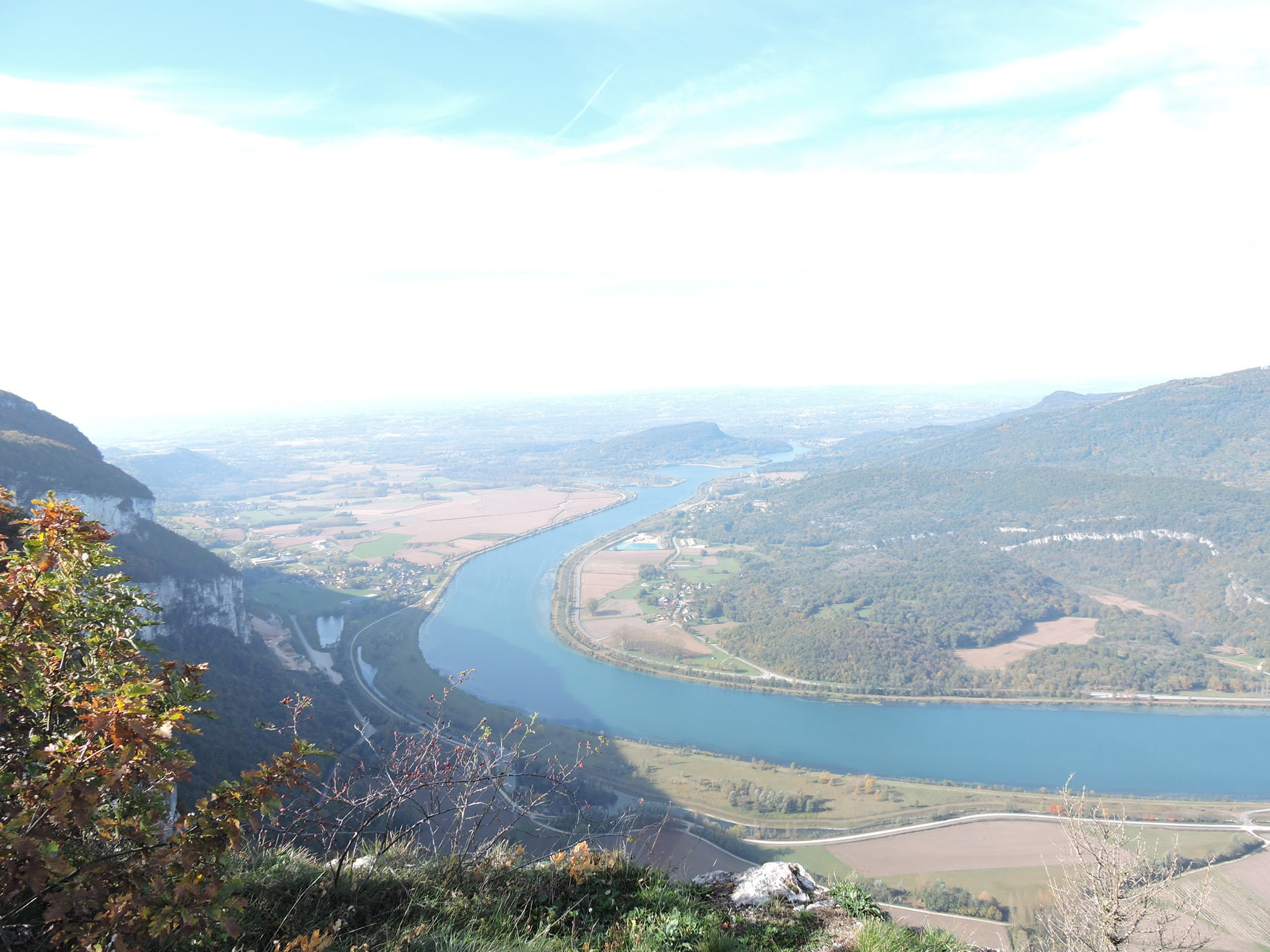On the way to the “sucs” of Meygal.
DIDIER HEUMANN, ANDREAS PAPASAVVAS

We divided the course into several sections to make it easier to see. For each section, the maps show the course, the slopes found on the course, and the state of the roads. The courses were drawn on the “Wikilocs” platform. Today, it is no longer necessary to walk around with detailed maps in your pocket or bag. If you have a mobile phone or tablet, you can easily follow routes live.
For this stage, here is the link:
https://fr.wikiloc.com/itineraires-randonnee/de-tence-a-queyrieres-par-le-gr65-gr430-39905133
It is obviously not the case for all pilgrims to be comfortable with reading GPS and routes on a laptop, and there are still many places in France without an Internet connection. Therefore, you’ll find soon a book on Amazon that deals with this course.
If you only want to consult lodging of the stage, go directly to the bottom of the page.
| Today, the route is a journey through the “sucs”, these strange volcanic domes that have been extinct for a very long time, unique in Europe. With their sugar loaf shape, they spring from the ground in the middle of wide-open spaces. Towards the end of the Tertiary era, more than 10 million years ago, when Hephaestus (Vulcan in Rome), who reigned in the burning bowels of the earth, stopped playing marbles, the formation of the Alps caused the old granite base to rise. Faults then opened and the magma rose to the surface to freeze on the surface.
There is often confusion in the general public between basalts and granites. But, in fact, it is the same material. It all depends on where the rock is formed. If the magma solidifies inside, the crystals under the effect of high pressure and high temperature recrystallize, giving above all granites, which can also rise to the surface, as in the Alps for example. But, if the fluid magma solidifies on the surface, it is then rather lava, basalt in fact. Magma contains a large amount of dissolved gas. Over time, the gas separates from the magma due to increasing pressure. The gas carries with it the magma, it is the eruption. This pressurization causes the volcano to swell and cause small earthquakes. The magma rises through the main chimney and it degasses. When the lava reaches the surface, the eruption begins. In the event of an explosive eruption, it will accumulate at the level of the cone forming a plug which when it explodes, will cause volcanic plumes and fiery clouds. In the event of an effusive eruption, the fluid lava flows down the sides of the volcano. The “sucs” are volcanoes involving a viscous magma, not very rich in gas. As there is little gas present, there is no explosion and crater formation as in traditional volcanoes. The lava flows slowly and solidifies almost instantly. So, volcanoes form rather gentle hills, domes. Over time, these formations eroded and the trees gradually grew on the sides.
Here is, for information, a small diagram showing the geographical position of the “sucs” in the region.
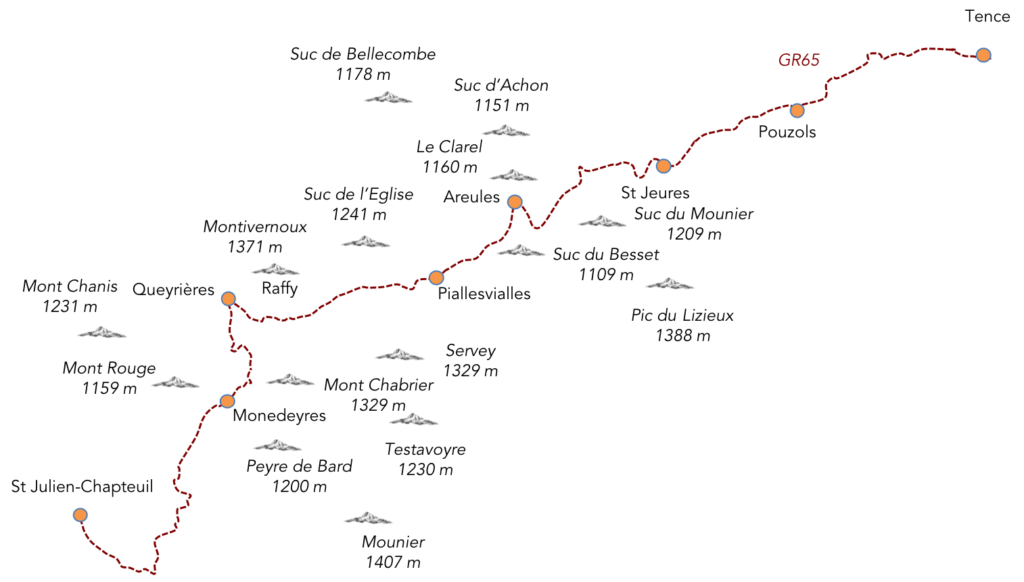
Today’s stage is in the Meygal, this large mountainous region of the Massif Central, located in Haute-Loire. Meygal is the heart of Velay. Its highest point is the Suc Testovoira at an altitude of 1436 m. For winter hikers, it is also a cross-country ski resort, which belongs to the municipality of Queyrières, where you will stop today. This Auvergne volcanic massif still and always generates a strange, secret atmosphere. As you approach Velay area, the beautiful stone houses here increasingly use volcanic stones and are gradually replacing granites.
Difficulty of the course: Slope variations (+681 meters/-384 meters) are quite pronounced for a stage of less than 20 kilometers. But, it is not a difficult stage, even if it is only an almost uninterrupted climb up to Raffy. But, the 15% slopes are quite discreet and there are often flat areas. It is only around Raffy, at the top of the forest, that the slopes are steeper, both uphill and downhill.
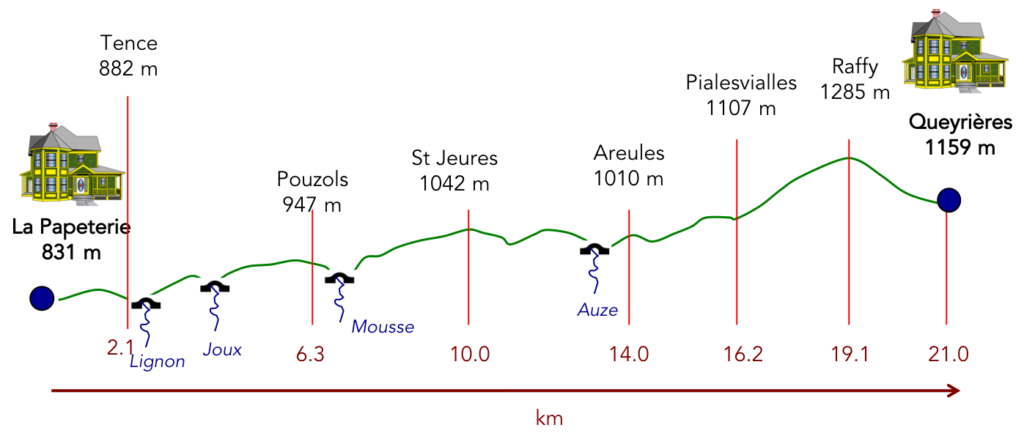
|
In today’s stage, the pathways have a small advantage over the paved roads:
- Paved roads: 9.7 km
- Dirt roads: 11.3 km
Sometimes, for reasons of logistics or housing possibilities, these stages mix routes operated on different days, having passed several times on Via Podiensis. From then on, the skies, the rain, or the seasons can vary. But, generally this is not the case, and in fact this does not change the description of the course.
It is very difficult to specify with certainty the incline of the slopes, whatever the system you use.
For “real slopes”, reread the mileage manual on the home page.
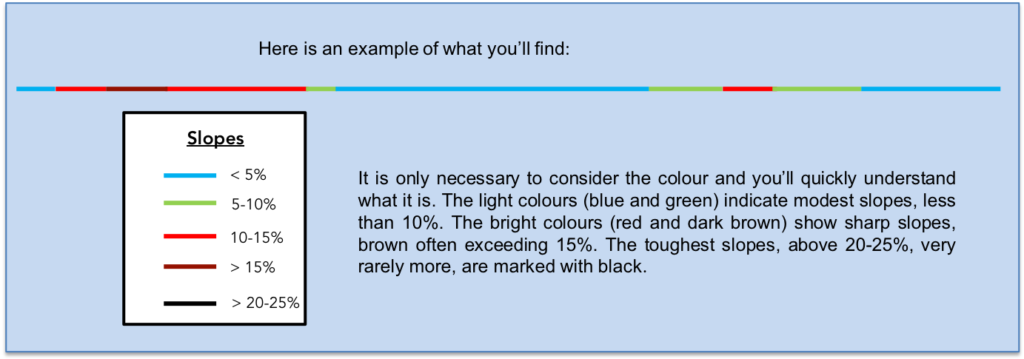
Section 1: Via Tence.

General overview of the difficulties of the route: : small hills around Tence, then course without problem.

| GR path leaves La Papeterie along the Lignon River, a beautiful and capricious river that crisscrosses the whole region, between Haute-Loire and Ardèche departments. |
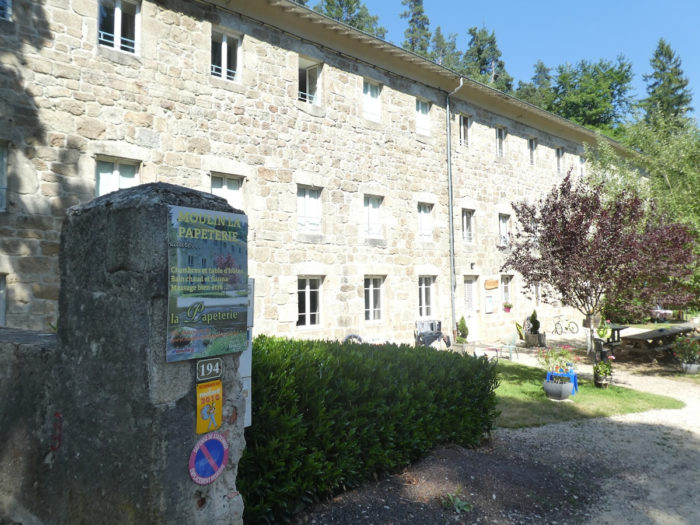 |
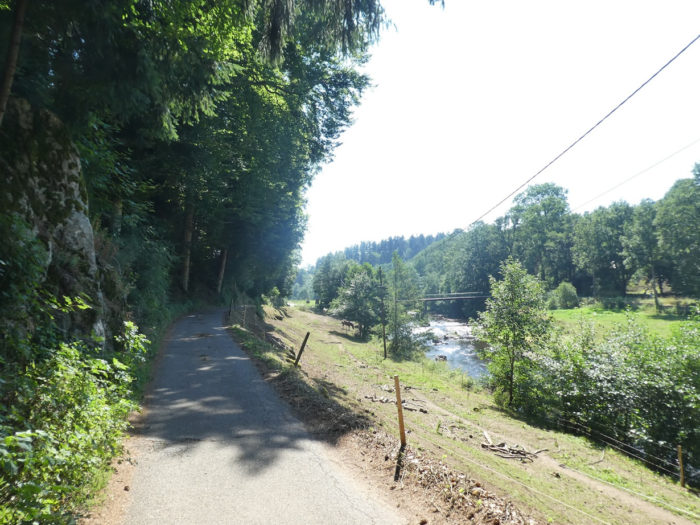 |
| Here, it does not cross the river and a paved road climbs up the hill in meadows and scanty crops. |
 |
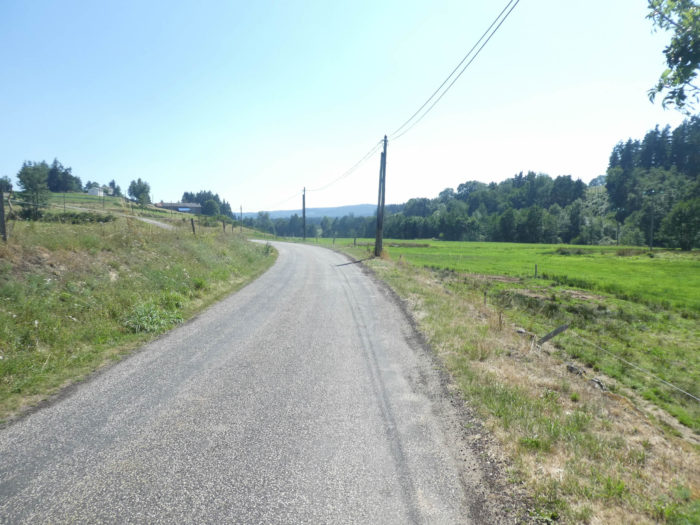 |
| However, at the top of the hill, generous cereals flourish. |
 |
 |
| Further ahead, the road then descends towards Tence via Les Salettes village. |
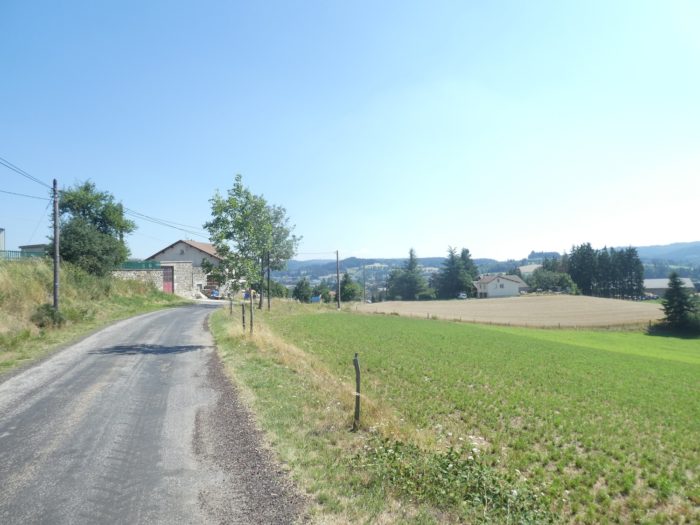 |
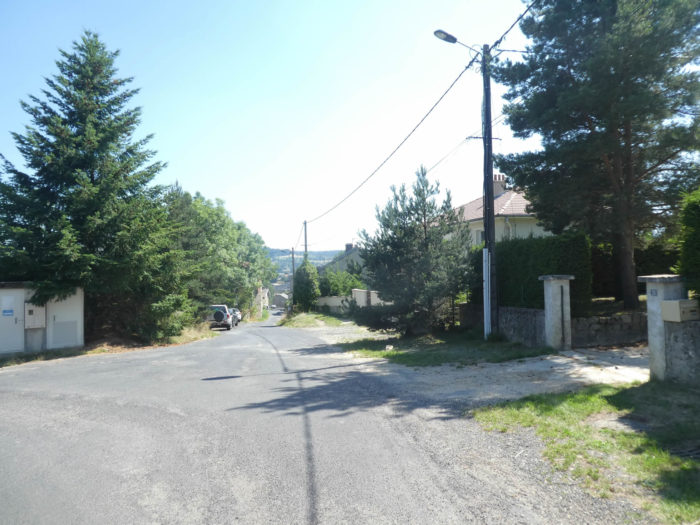 |
| At the entrance to Tence, where the streams run in a park at the bottom of the city, you have to be very attentive, not to consider the misleading marks of the GR, because otherwise you will embark on GR430 path which arrives here, at the risk of returning to Montfaucon. |
 |
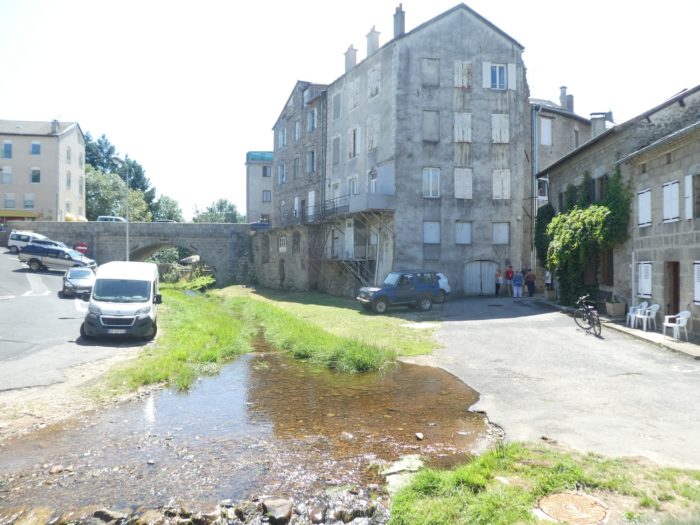 |
You must therefore imperatively head towards the small borough to cross it.

| LGR path climbs towards the hill within the old fortification walls. |
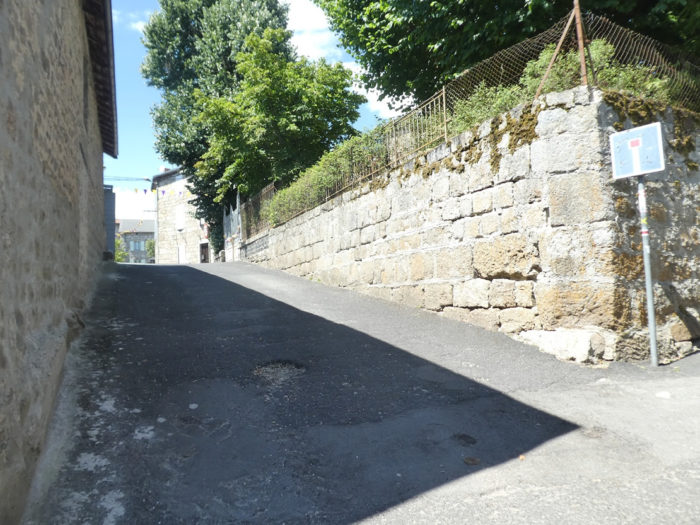 |
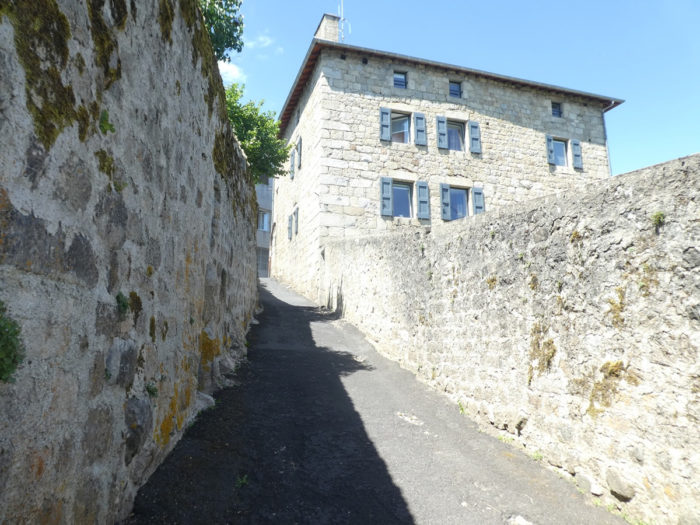 |
| Tence has 3,000 inhabitants. The church of St Martin sits enthroned on a large square in the middle of old carved stone houses. There is even a Protestant temple here, the Protestant Ardèche not being far from here. |
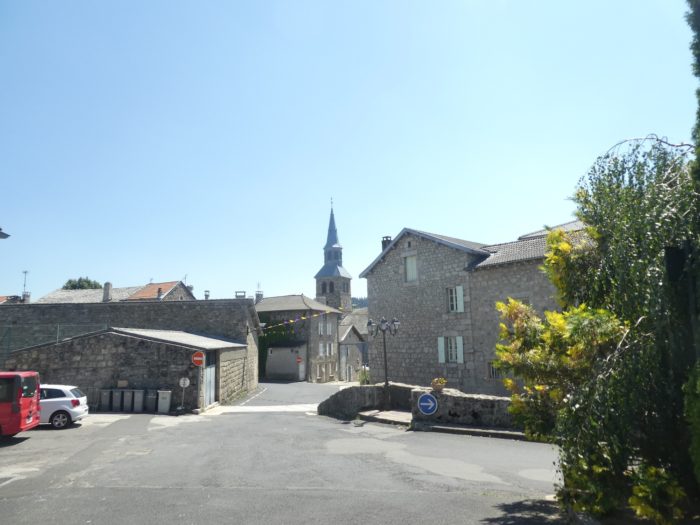 |
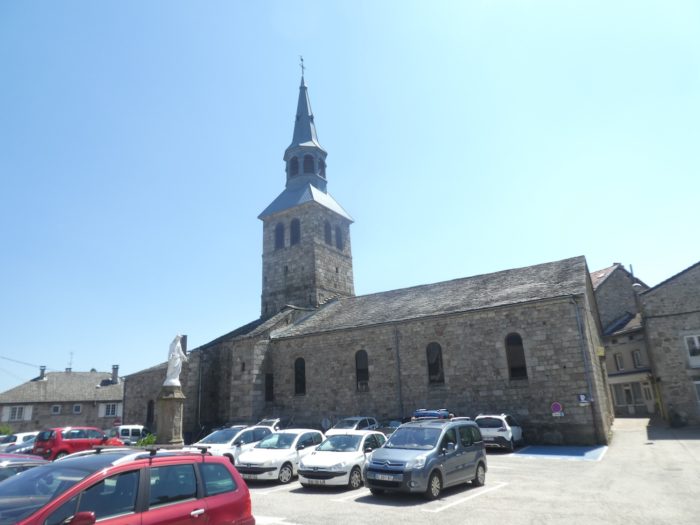 |
| There are pretty well-appointed squares, near the town hall, the war memorial or the Chapel of Penitents. |
 |
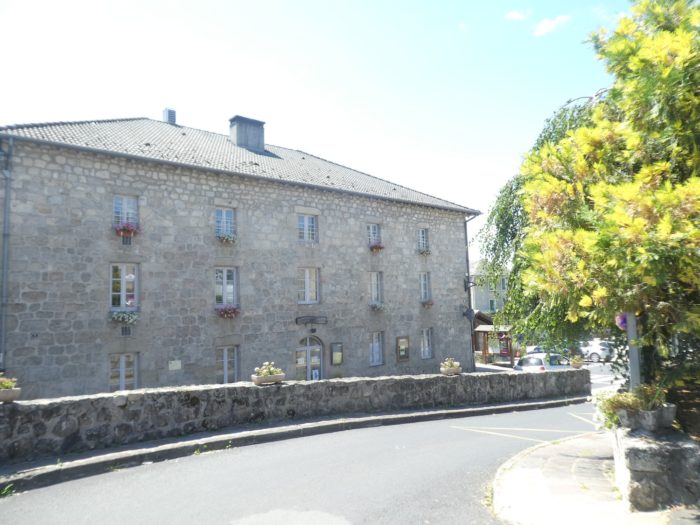 |
| The chapel is at the top of the Place du Chatiague. It was built at the beginning of the XVIIIth century by the secular brotherhood of the Penitents of Saint-Sacrement. This chapel is included in the processions of Holy Week and Corpus Christi. |
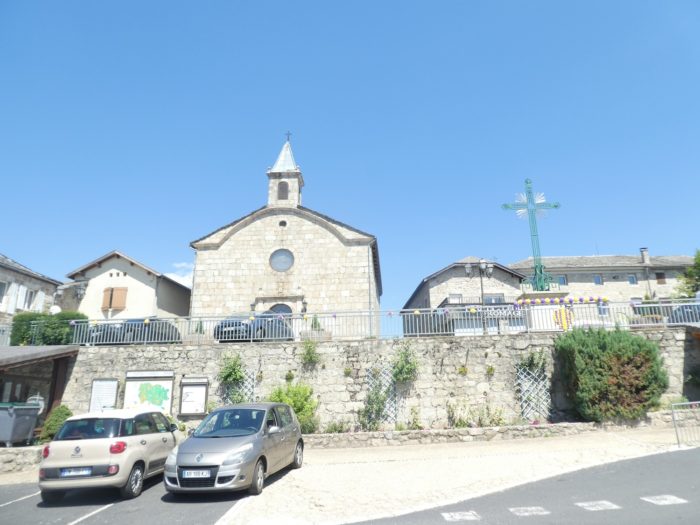 |
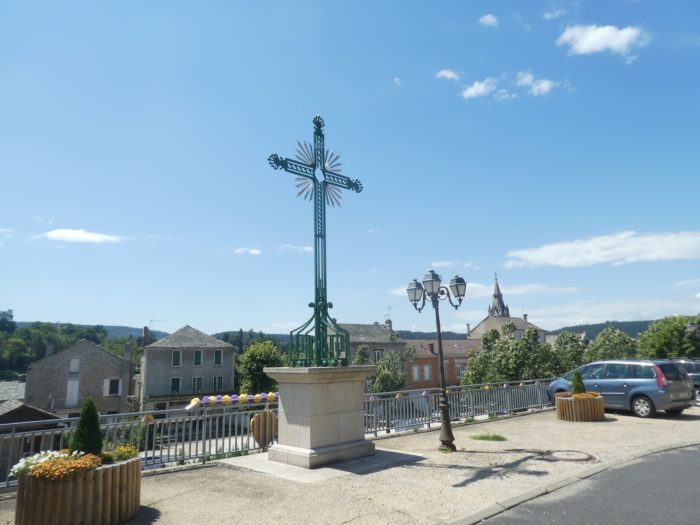 |

| The organization of the borough is multi-storey. Beyond the chapel, GR path slopes down to the center. Small alleys serve the old village where the shops are grouped. |
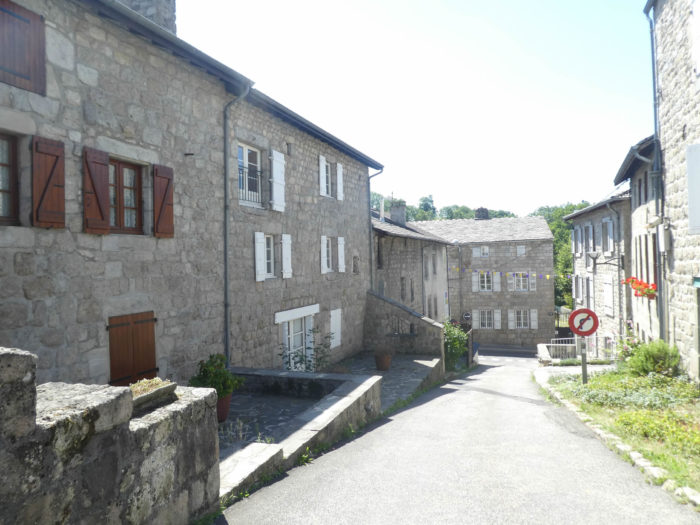 |
 |
| GR path comes out of Tence on the other side of the hill, at the bottom of the borough, passing under what remains of the walls of the old city. Today, there is no direction problem, GR65 path and GR430 path being common until the end of the stage. Happily, the pilgrim will therefore no longer be able to risk taking the wrong path like the day before. |
 |
 |
| GR path briefly crosses a jewel of a small park where timeless maple trees stand enthroned. |
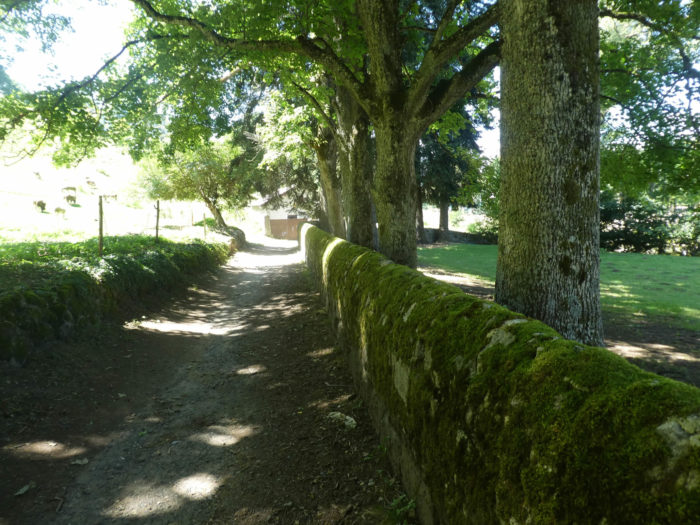 |
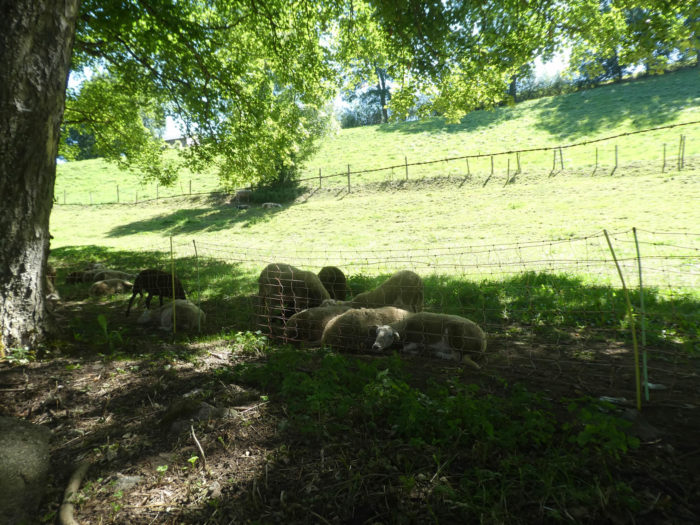 |
| In the park, a footbridge allows you to cross the Lignon River, which flows calmly here. You can still see how the city is beautiful, uniform with its gray stone houses. |
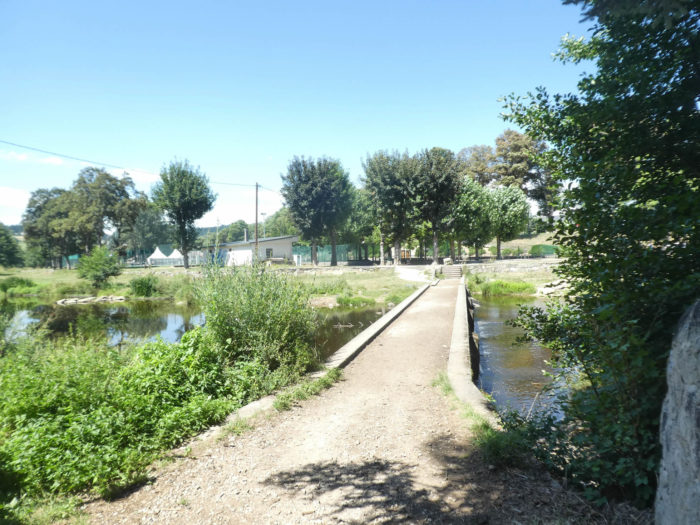 |
 |
| Further afield, GR path leaves the leisure park under tall chestnut trees and poplars. |
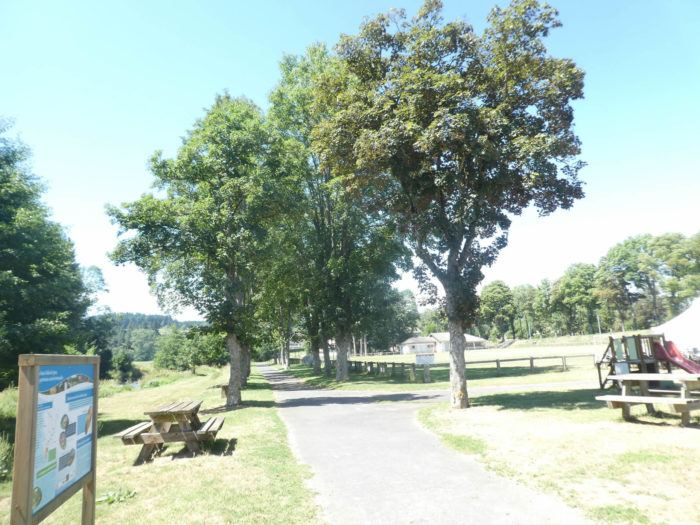 |
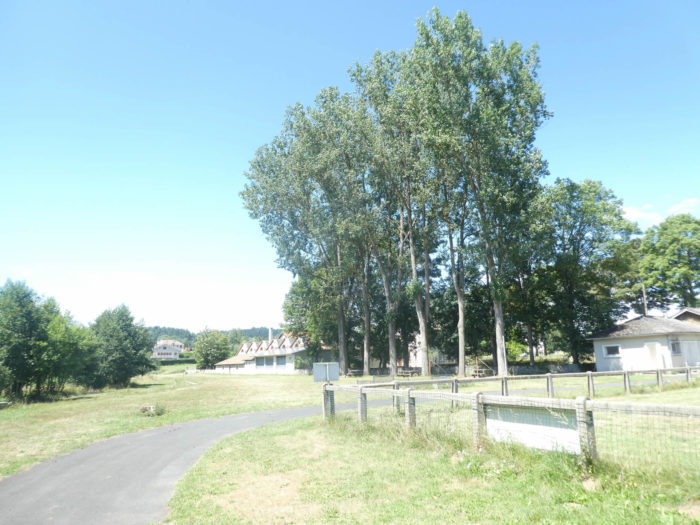 |
| It then joins a small fairly busy departmental road. You have to walk here almost half a kilometer on the side of the road. |
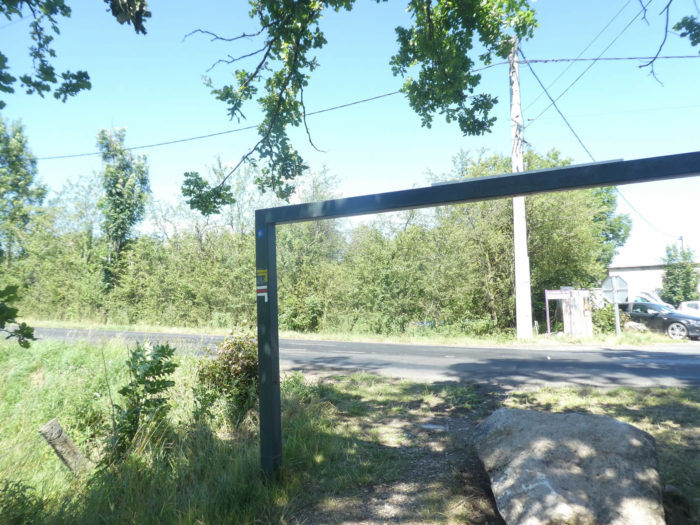 |
 |
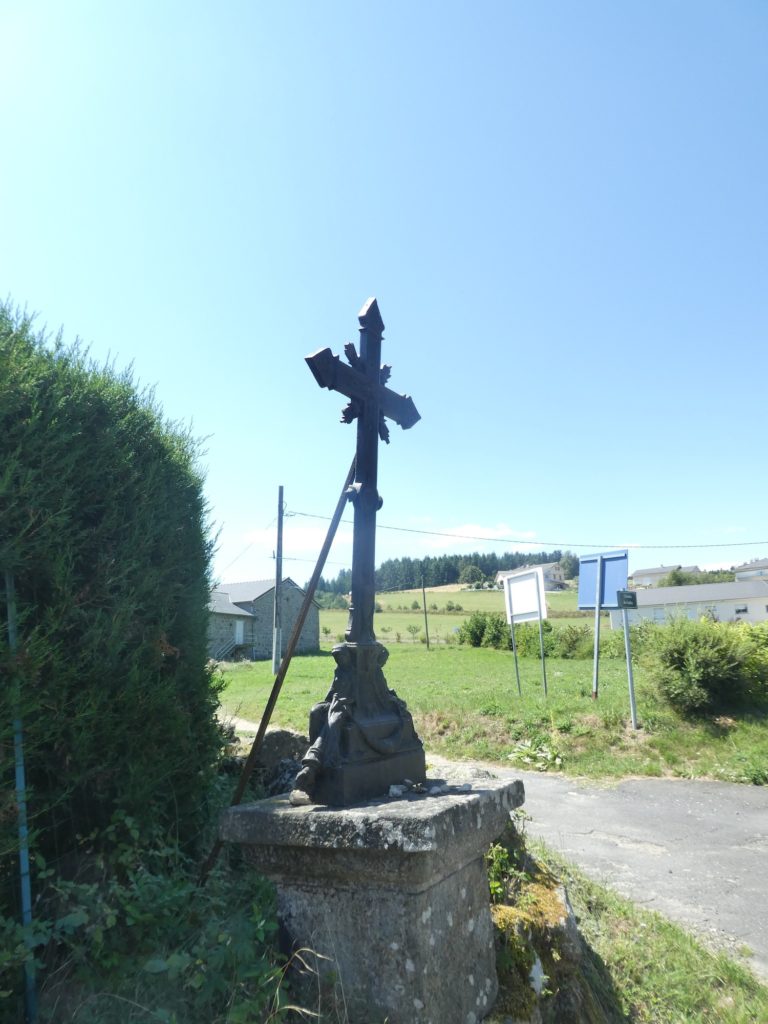
| At a roundabout, GR path leaves the main road to take a small bony road that climbs in recent housing estates. Here, the slope is almost 15%. |
 |
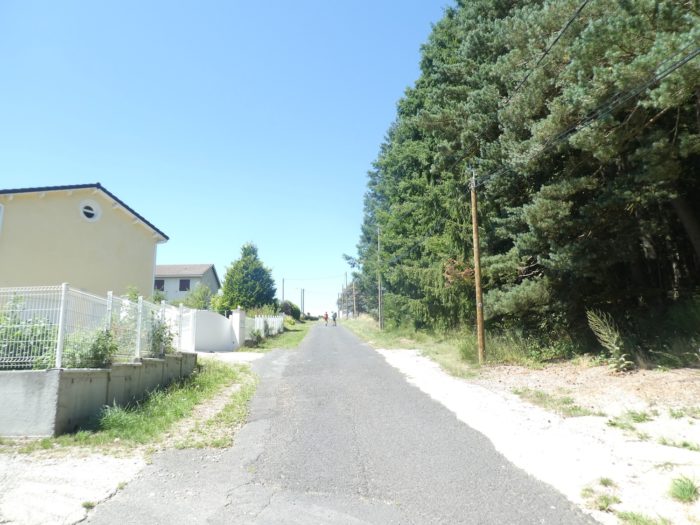 |
| Further on, the road gradually approaches the forest. |
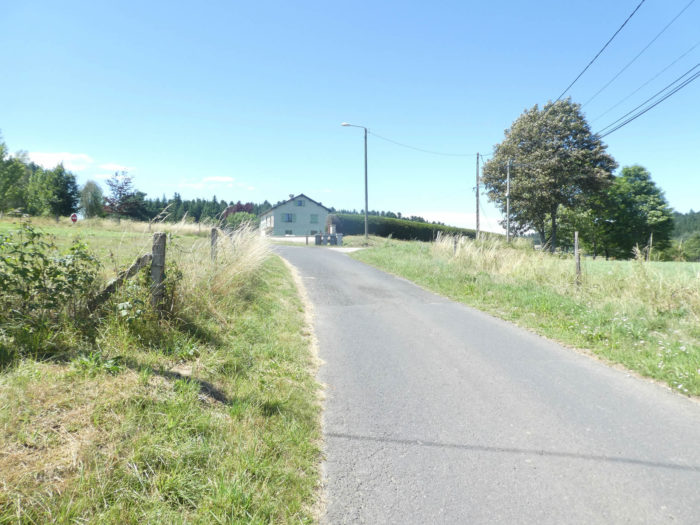 |
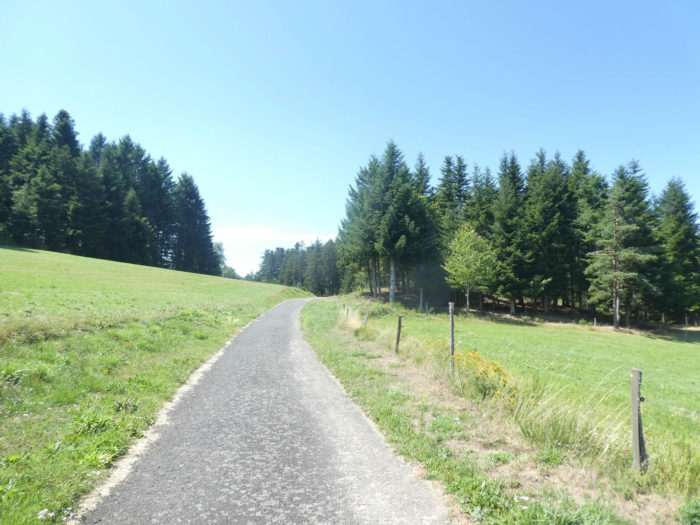 |
| At the entrance to the forest, GR path leaves the paved road for a dirt road, and the slope is less demanding. |
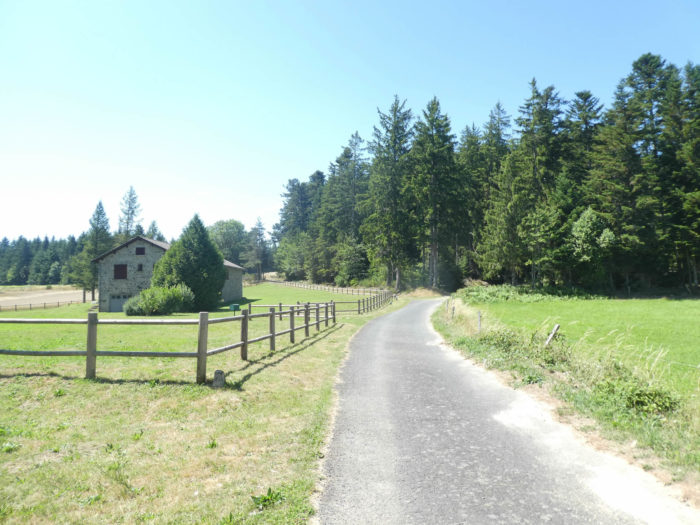 |
 |
| Further up, the pathway crosses a forest that is absolutely beautiful and relaxing, in the fir trees. The Haute-Loire is the only region crossed by the Way of Compostela, where the white fir trees and the enormous Douglas firs have taken over the spruces, which are as discreet as possible, even almost non-existent. |
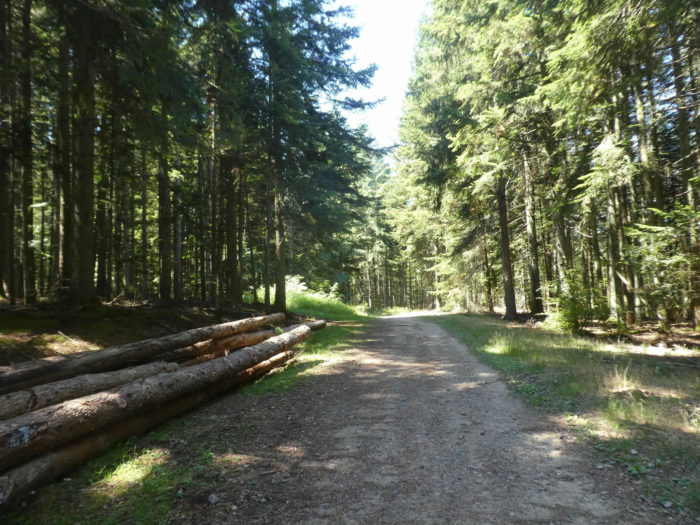 |
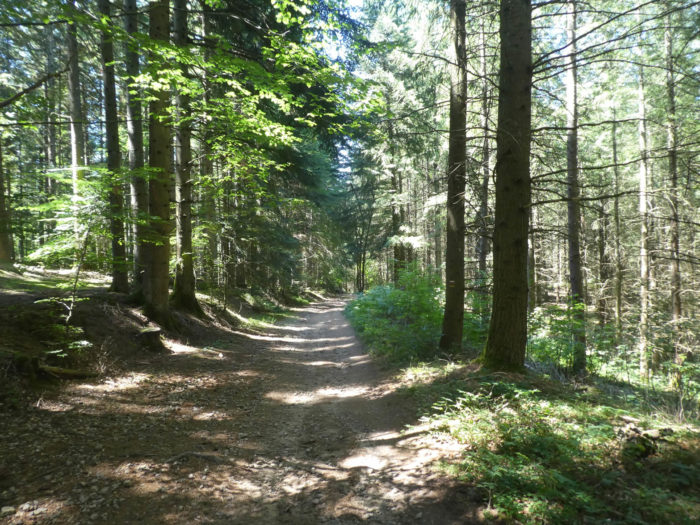 |
Section 2: Stroll through berries, meadows, and groves.

General overview of the difficulties of the route: course without any problem.

| Shortly after, the pathway descends the hill on a fairly steep slope… |
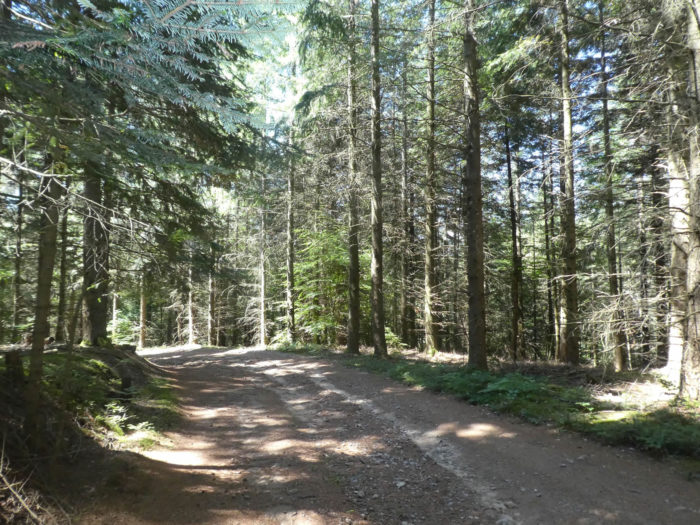 |
 |
| …to cross the discreet Joux stream. |
 |
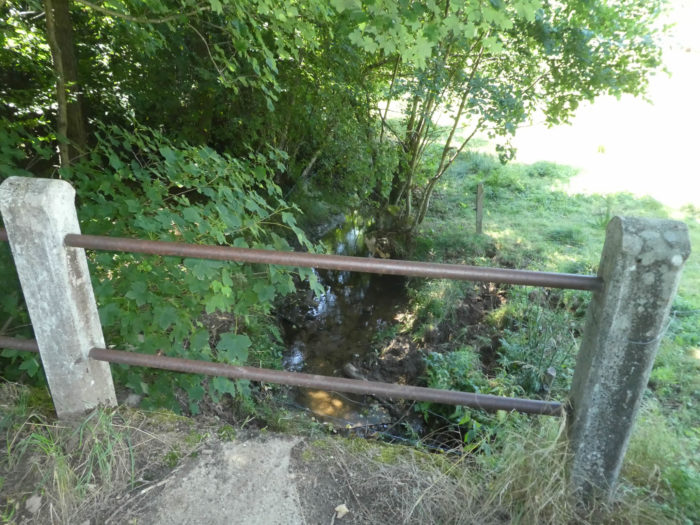 |
| Beyond the stream, it gently climbs under the maples towards the departmental road. |
 |
 |
| But, here GR path does not follow the departmental road. It leaves on a small secondary road that climbs gently for almost a kilometer in hardwoods and pines. |
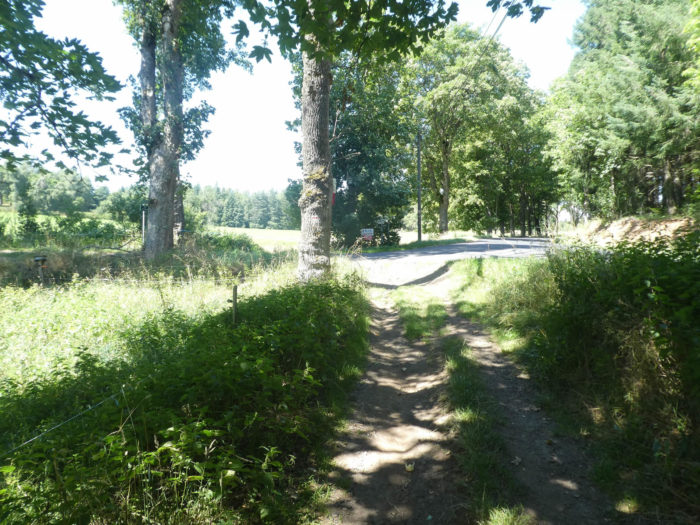 |
 |
| It leaves on a small secondary road that climbs gently for almost a kilometer in hardwoods and pines. |
 |
 |
| At the top of the climb, a modest wooden cross is planted under the trees. |
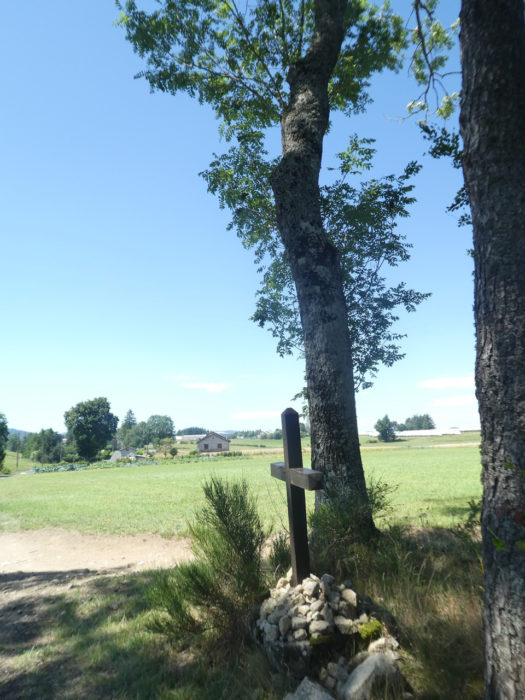 |
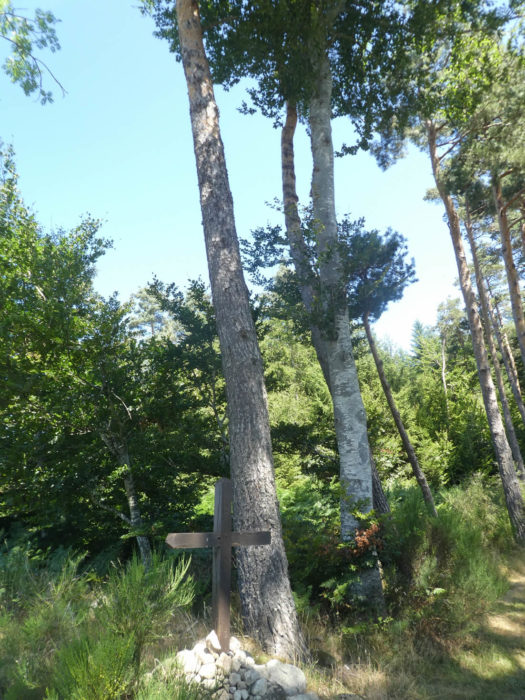 |
| There, GR path takes a few more steps on the road towards the hamlet of Les Gouttes, before branching off and climbing into the meadows along the edge of a fir trees. |
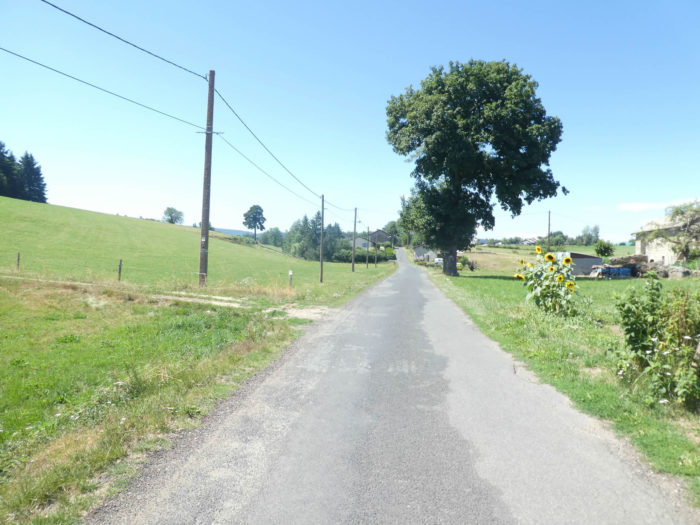 |
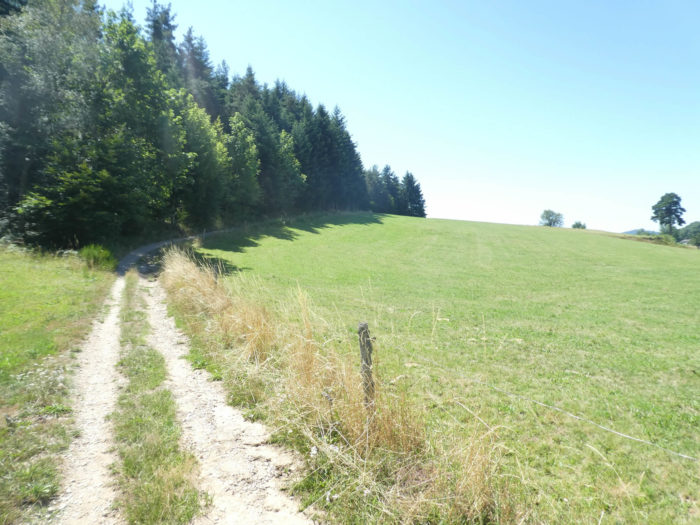 |
In the near horizon, you can already see the “sucs” emerging, these small remnants of wooded volcanoes, so characteristic of Velay region.

| The pathway then enters the forest for a while. |
 |
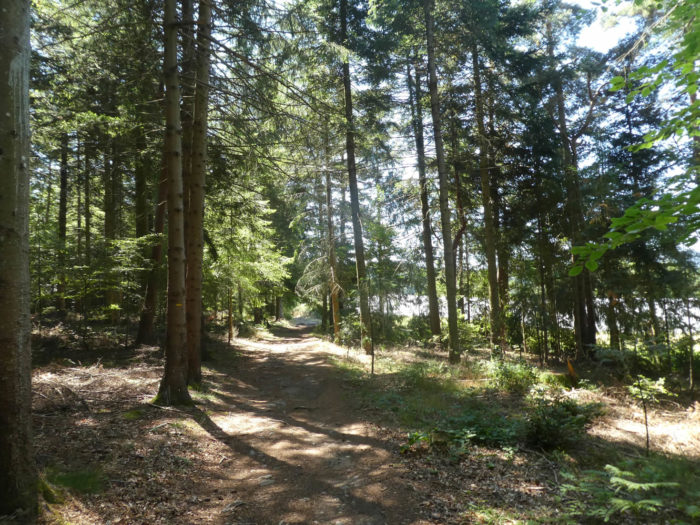 |
| The pathway does not stay long in the fir forest. The space then opens up to a bucolic countryside. |
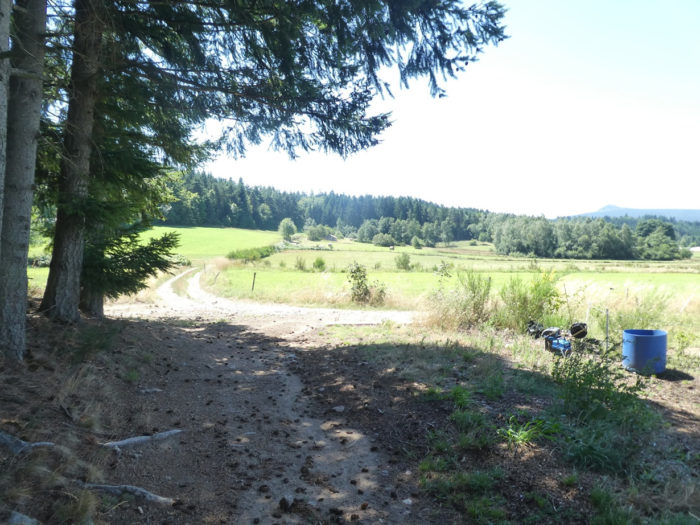 |
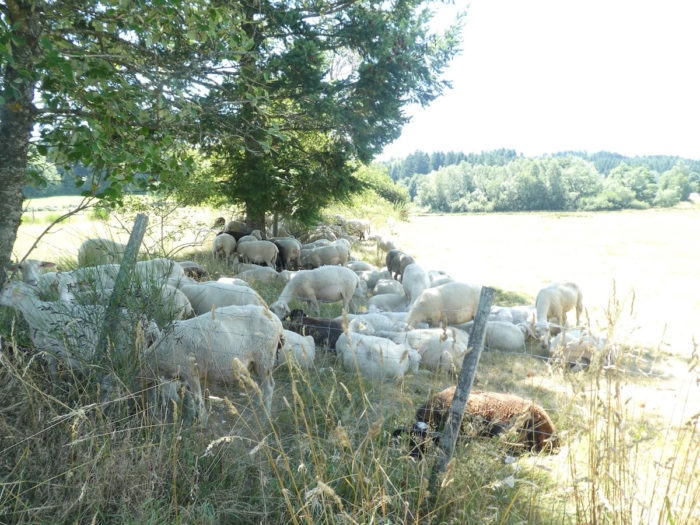 |
| It comes out to cross a region that specializes in the production of berries. When we passed here, there were only blueberries and currants left. |
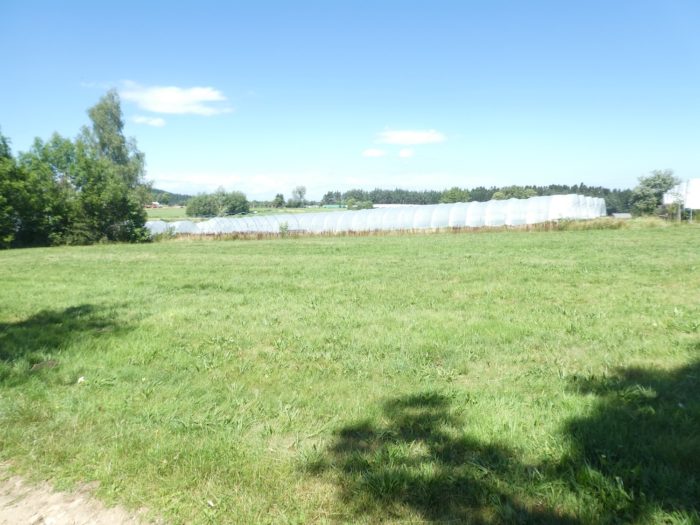 |
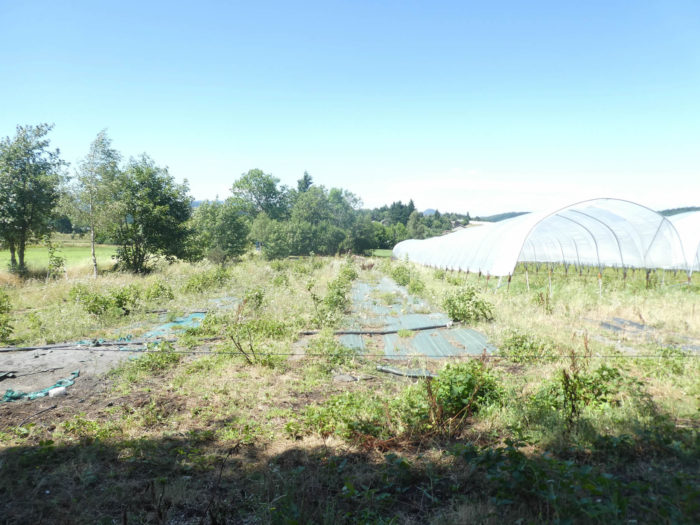 |
| The pathway wanders a little along the culture tunnels under the maple trees. |
 |
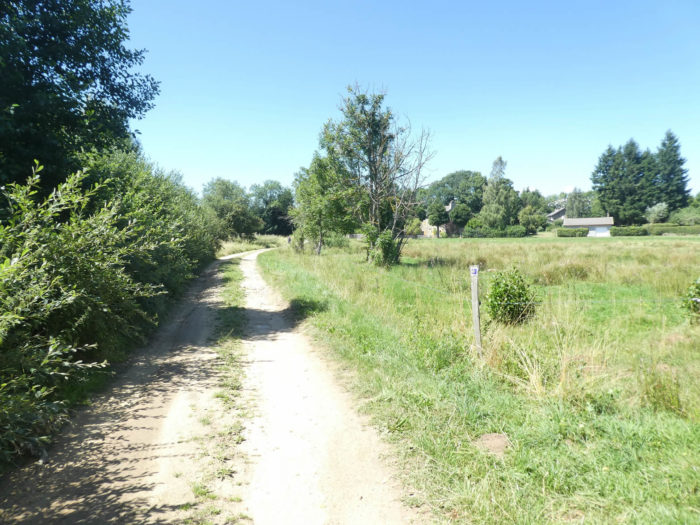 |
| It soon heads to Pouzols and its beautiful stone houses. The water stagnates in the old wash house, but it flows, cool, at the fountain. |
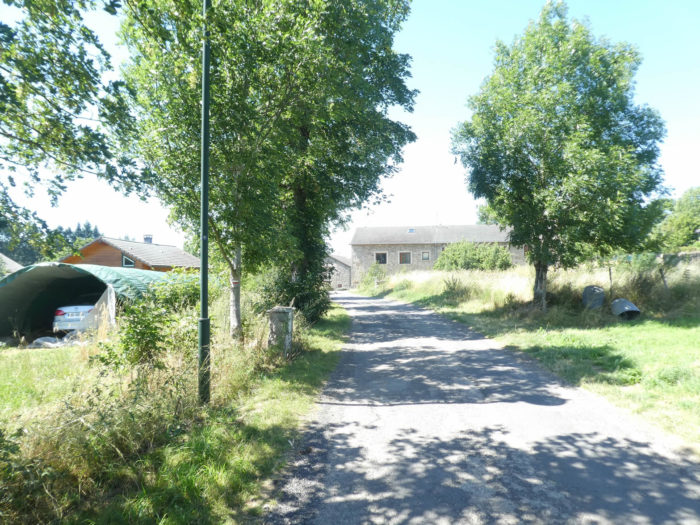 |
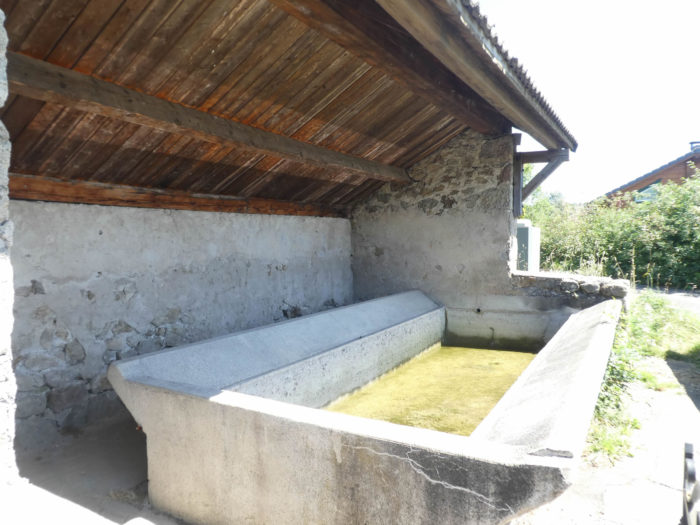 |
| This is where the red fruit merchants are located. |
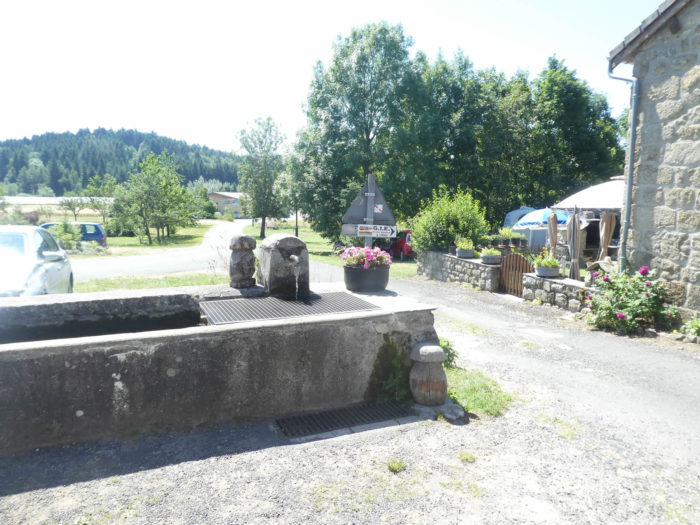 |
 |
| A small road leaves the village… |
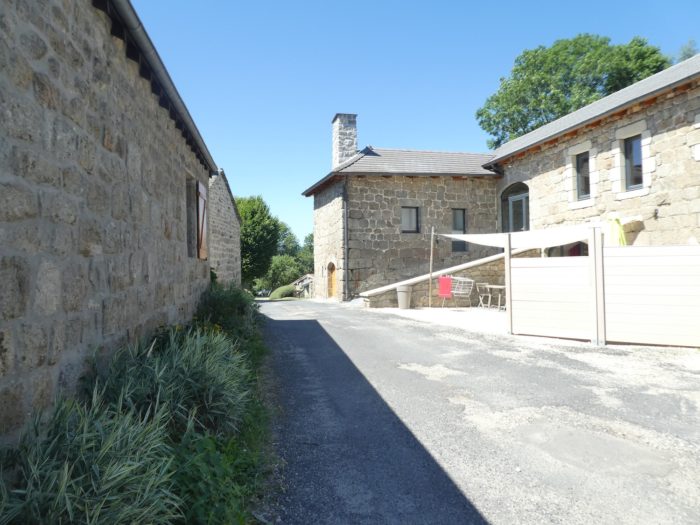 |
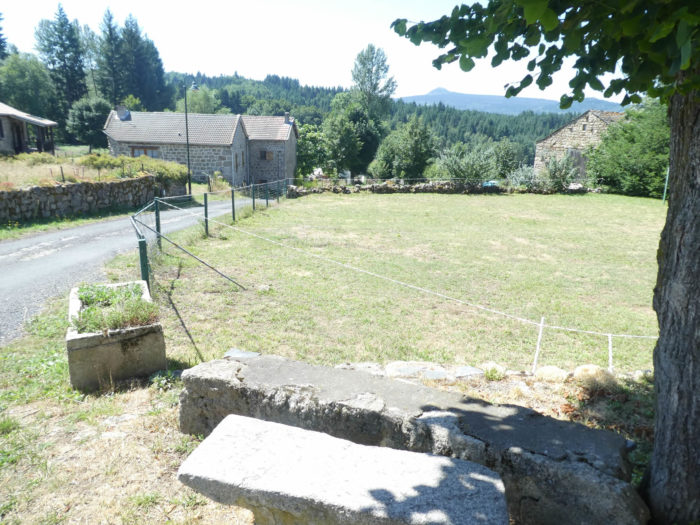 |
| …before a grassy pathway takes over in a steady descent, first through berries, then through wild grass and small maple trees. |
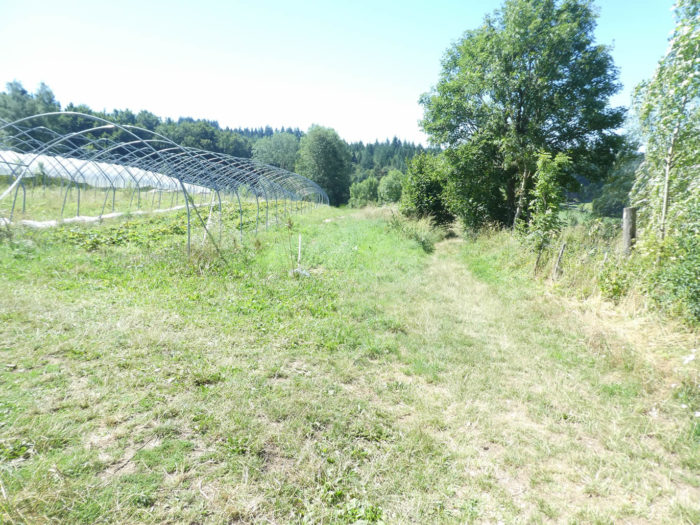 |
 |
| Further down, the space opens up in the middle of the broom, and the pathway joins a small plain. |
 |
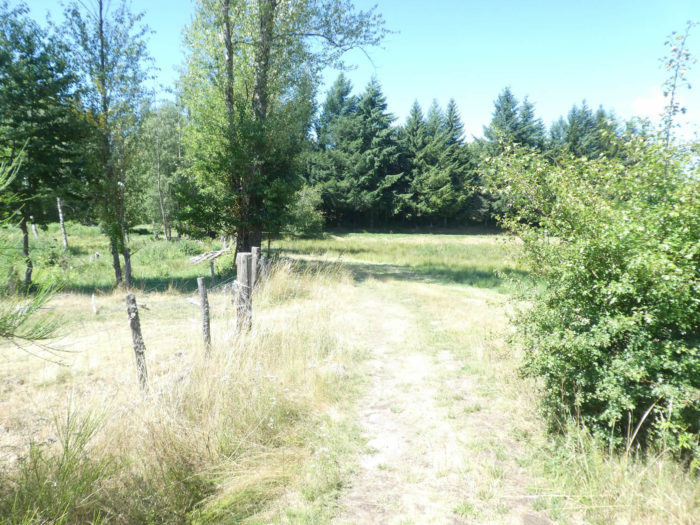 |
| There, GR path joins a small road that runs under fir trees and maples. |
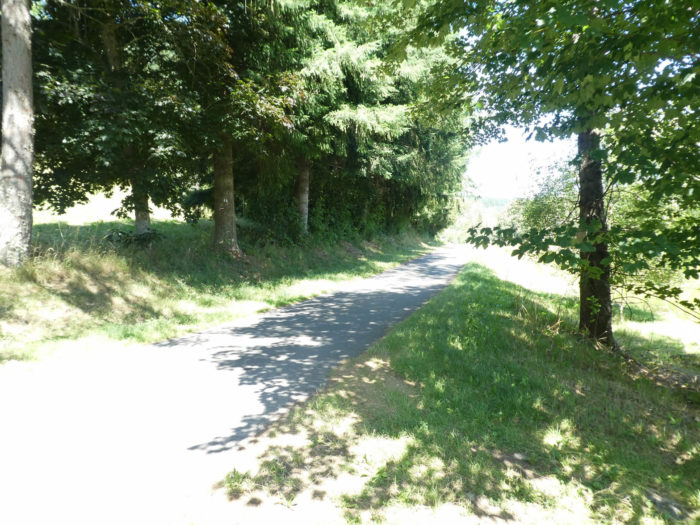 |
 |
| Shortly after, at the edge of the village of Les Moulins, the road crosses the Moss stream, where a trickle of water flows. |
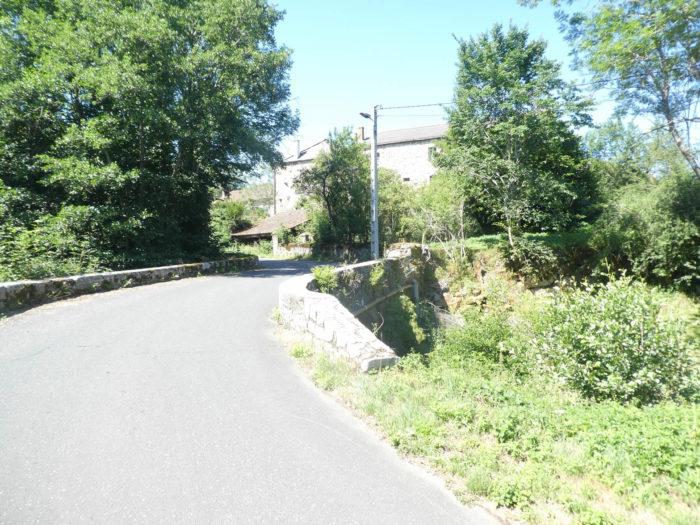 |
 |
| In these small villages and hamlets, there is no structure where to find something to eat. Here, a large ash tree thrones, seigniorial, in the meadows. |
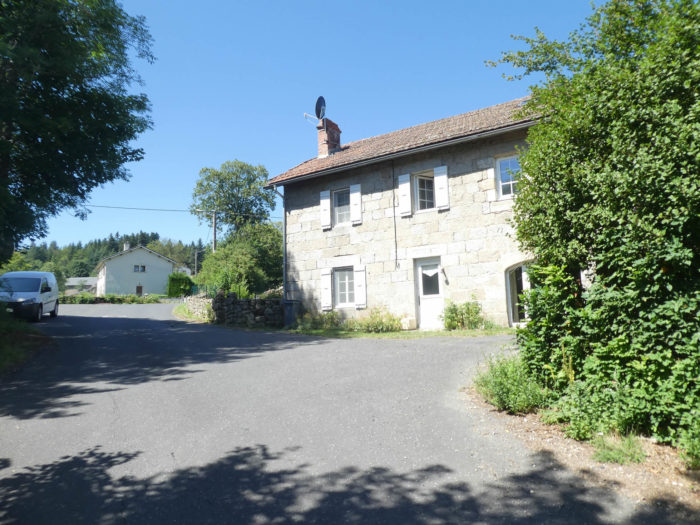 |
 |
| At the exit of the hamlet, GR path climbs steeply first on the paved road… |
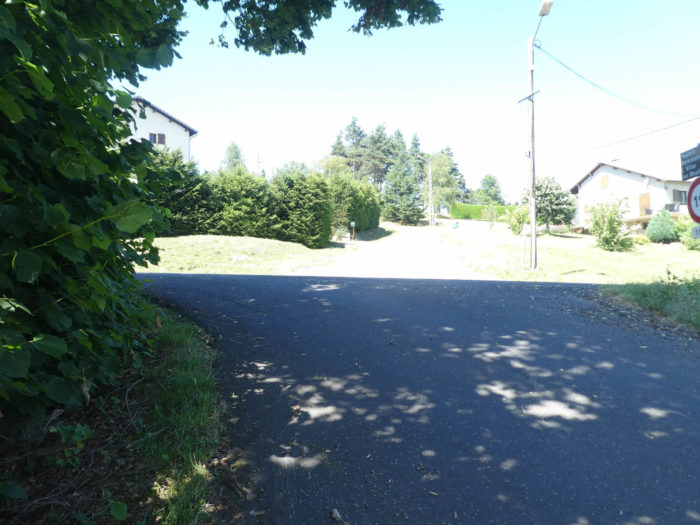 |
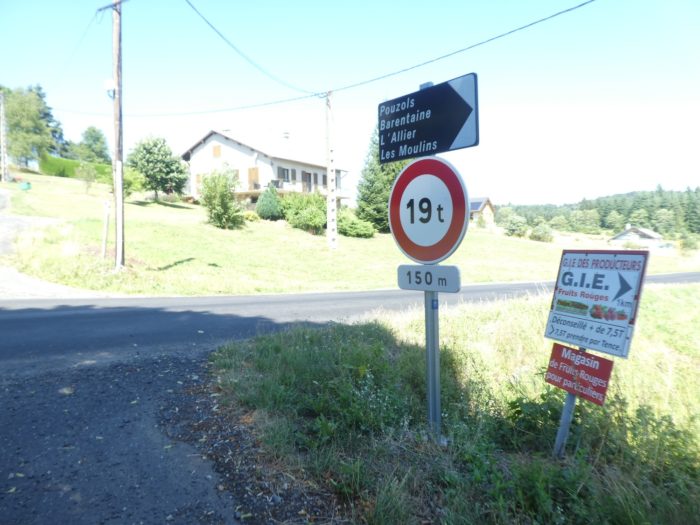 |
| …then on a dirt road towards a reservoir. |
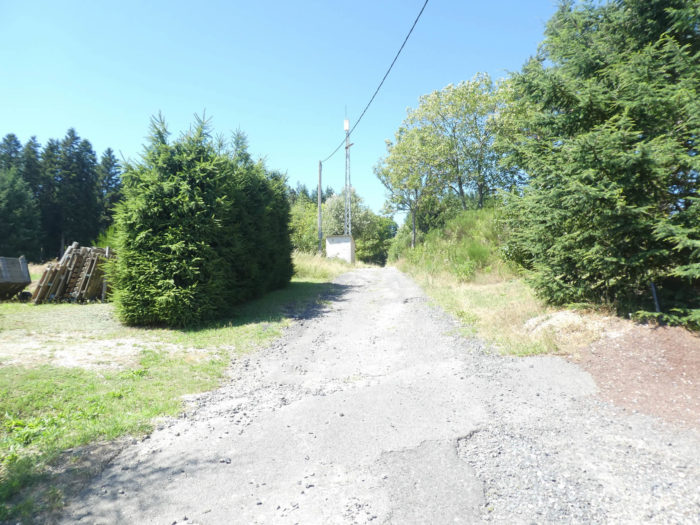 |
 |
| Further on, the pathway slopes down the hill. Here, these are no longer dense forests, as above, but small groves where ash trees, spruces, and maples flourish until you can no longer count them. |
 |
 |
Section 3: St Jeures, a beautiful stone village on the hill.
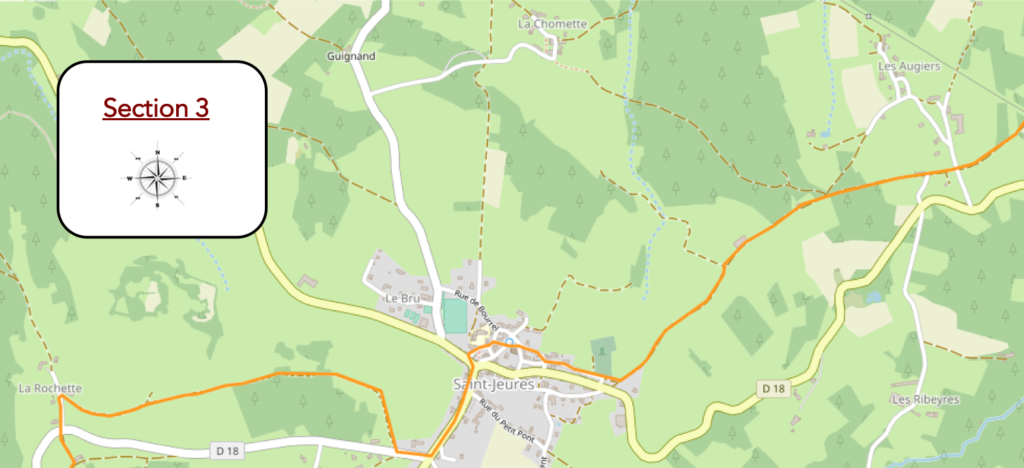
General overview of the difficulties of the route : pronounced ups and downs.
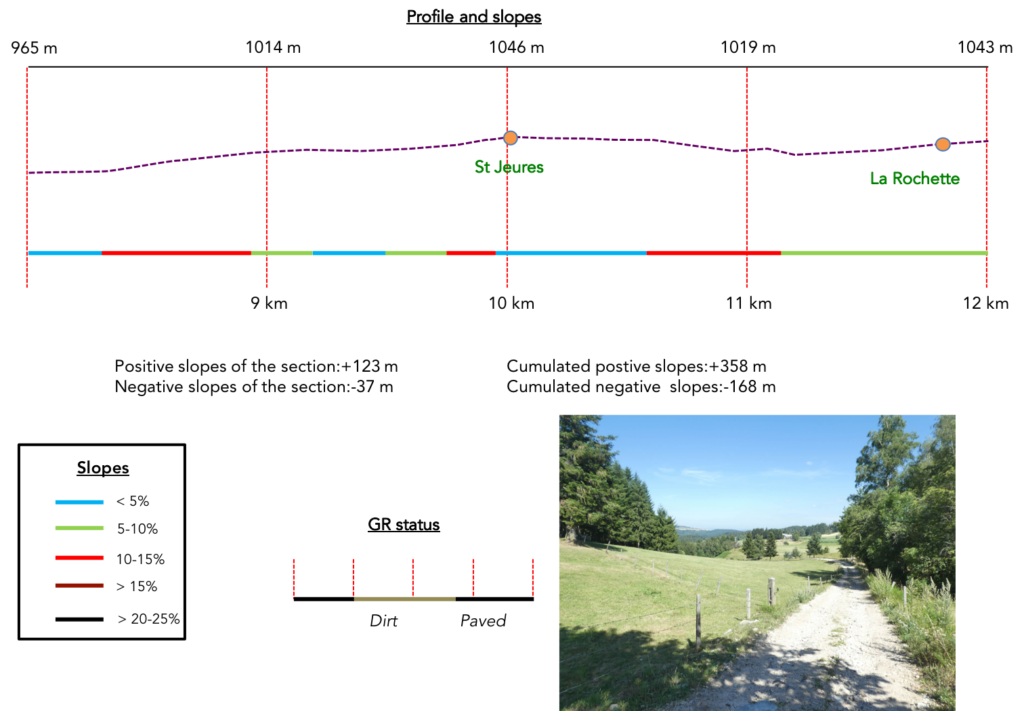
Then the slope smoothens, and the pathway runs through meadows in a magnificent landscape, where small forests take shape all around.
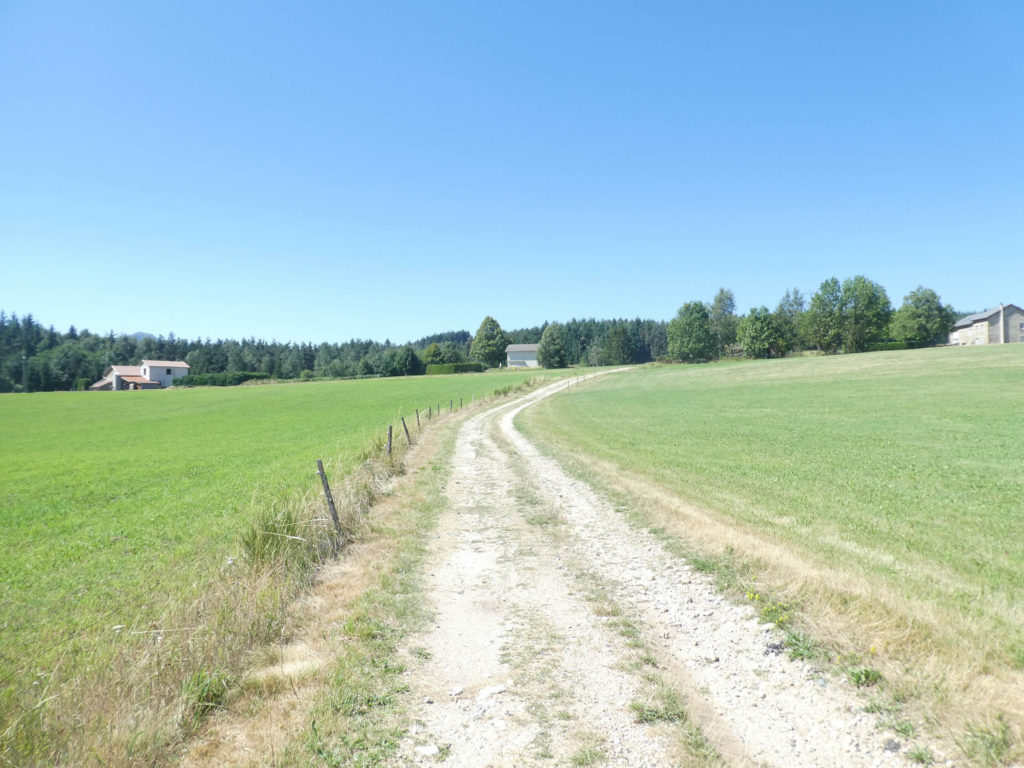
| The pathway crosses a paved road and continues into the large clearing. The days are not always the same on the Camino de Compostela. Yesterday, we had to face the stones of the track. Today, there are almost none. |
 |
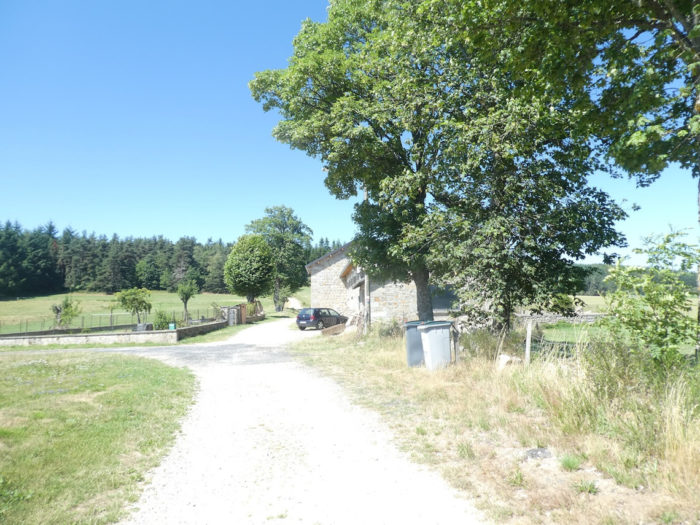 |
| Further on, it slopes up back to the hill. Sometimes, it hesitates beteen open countryside and udergrowth. |
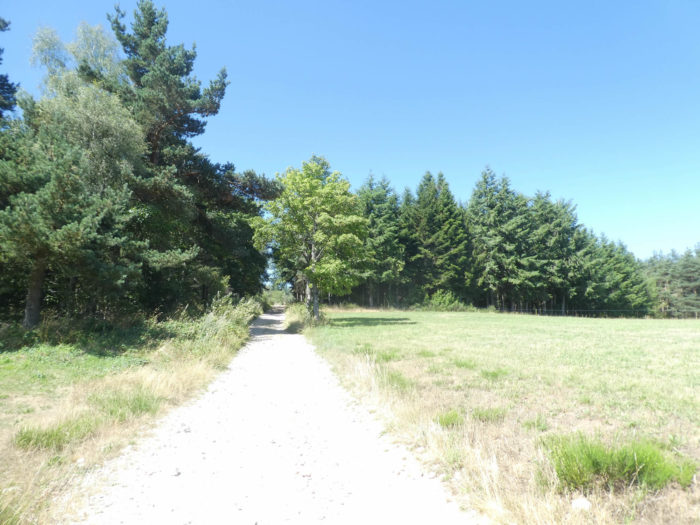 |
 |
| A little up, it feels like being in the Southwest, with its duck farms and corn silos. But the Haute-Loire is not known for foie gras. May be poultry is raised here. |
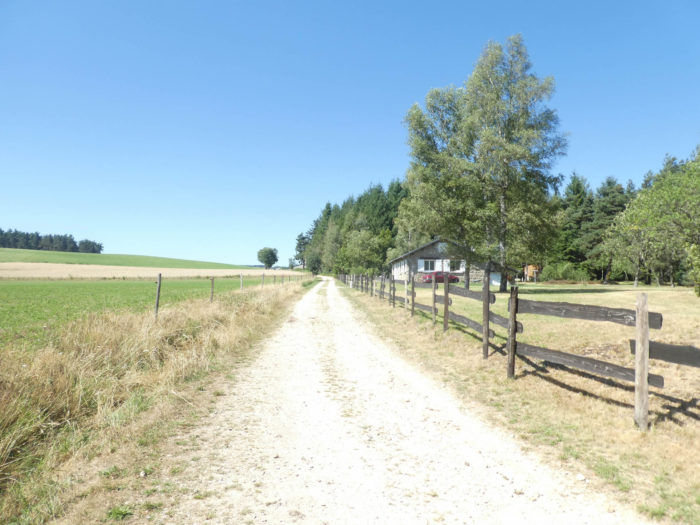 |
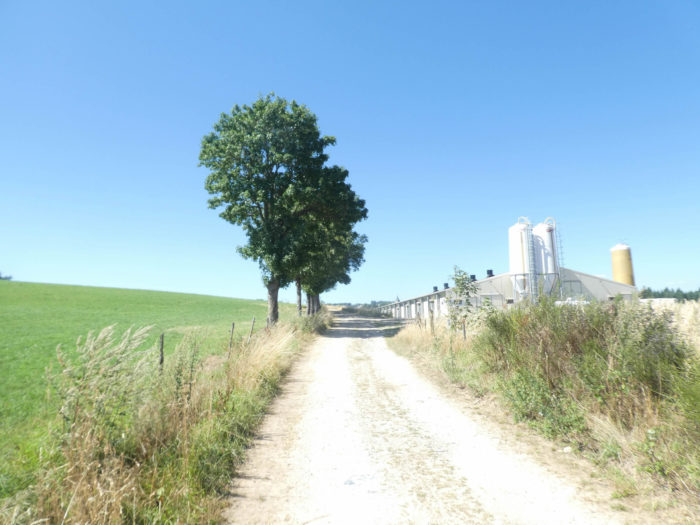 |
Along the way, the pathway runs in front of the large and magnificent Couvet Cross, which prays in the sky.

| At the top of the hill, you can see the village of St Jeures emerging. The pathway then quickly approaches the cemetery at the bottom of the village. Here, you see more crps, corn especially. |
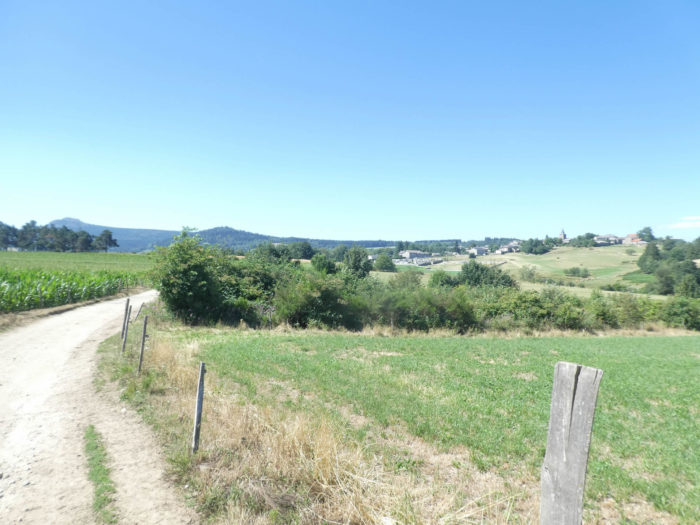 |
 |
| The pathway then joins a small road at the level of the cemetery and climbs in a very steep slope, between high masonry stone walls, towards the center of the village. |
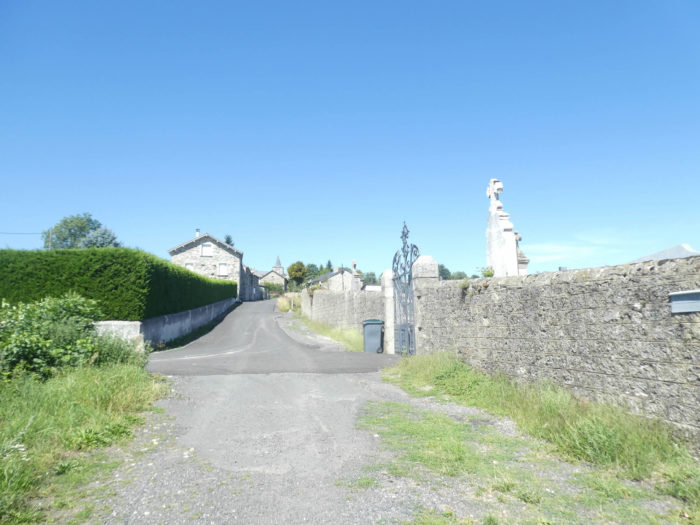 |
 |
| In the center of the village, on a large square, stands the church, an old Romanesque chapel from the XIIth century, in granite, remodeled in the XVth and then in the XVIIth century. The interior is very sober. |
 |
 |
| GR path crosses a beautiful village, made of houses in volcanic stones of all colors. /td> |
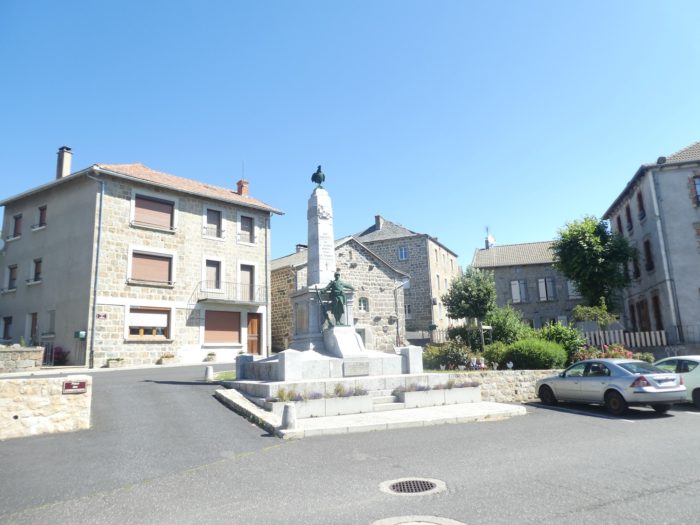 |
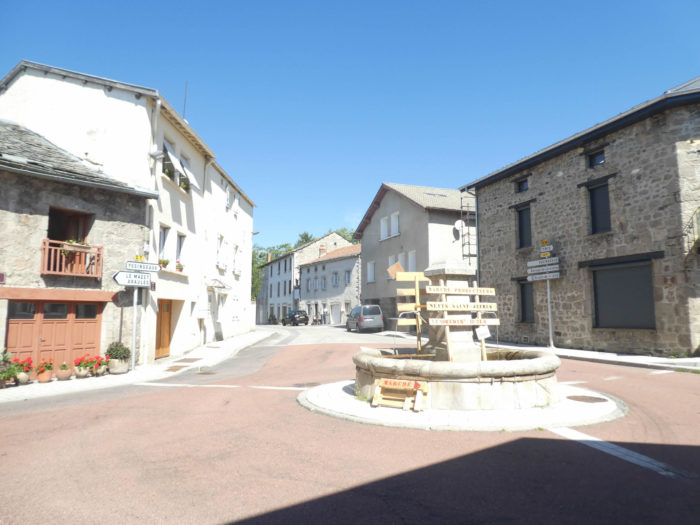 |
| Beyond the village, GR path follows the departmental road a little, a little frequented axis here. |
 |
 |
| It stays on the road until the place called La Croix de Pierre. |
 |
 |
| Shortly after, a pathway descends a few hundred meters on a fairly steep slope. The landscape is again very bucolic here, in the middle of meadows and small groves, where in the middle of the deciduous trees you find the fir trees again. |
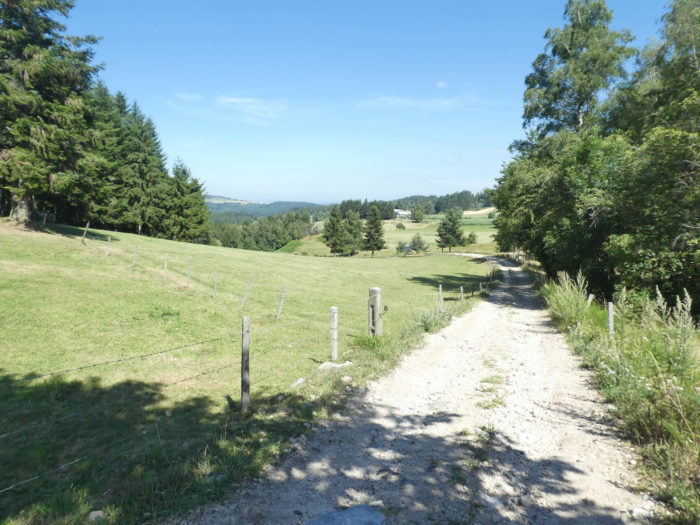 |
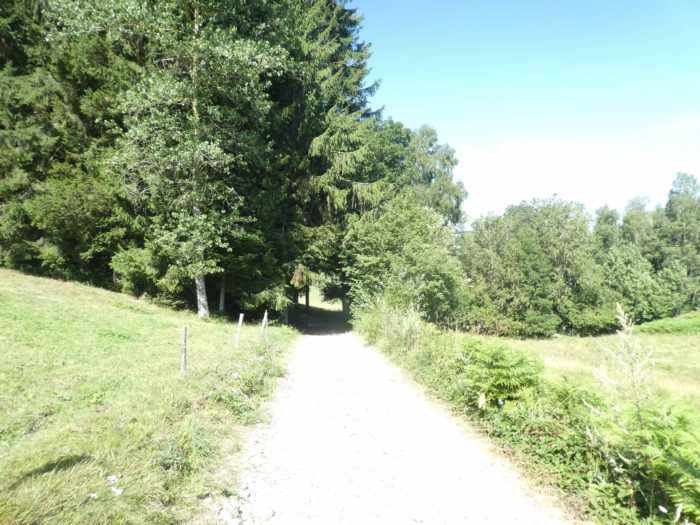 |
| Then, the pathway slopes up in the corn and undergrowth of maples. You are gradually approaching “sucs”. Here emerges the Suc of Achon. |
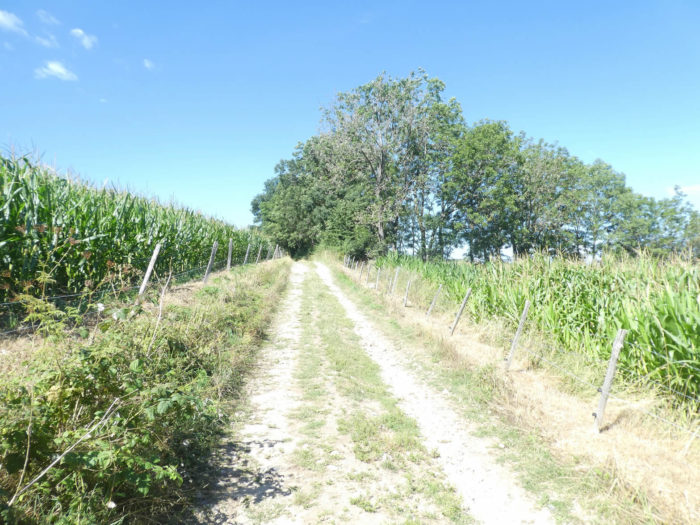 |
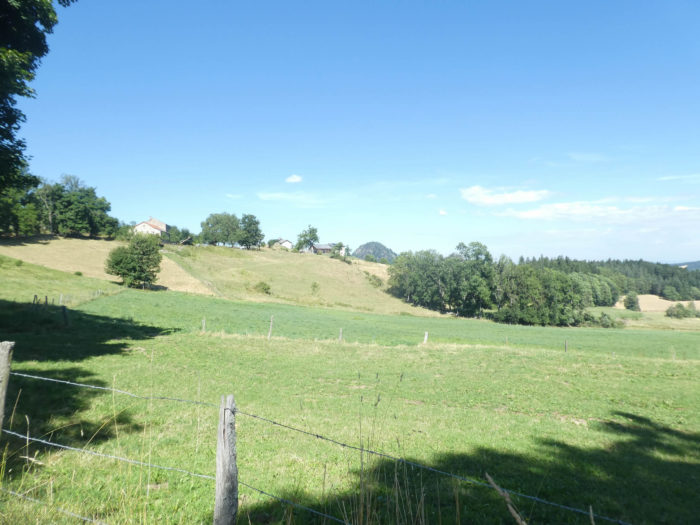 |
| On the way there is a beautiful fountain hidden under the maples and the ash trees. |
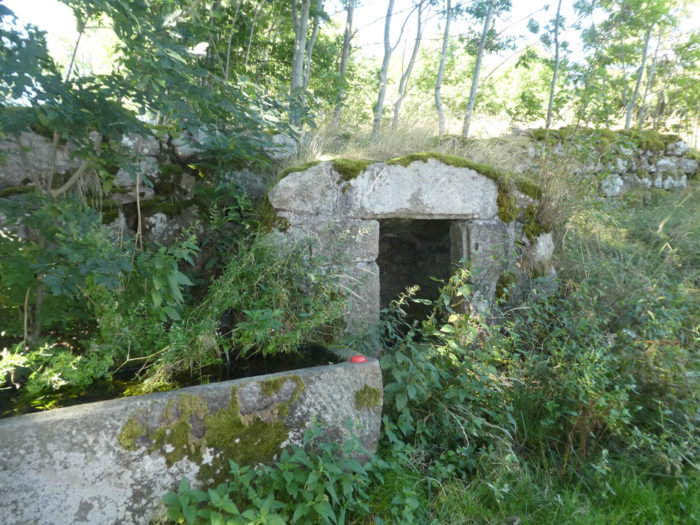 |
 |
| Shortly after, the pathway passes to the other side of the departmental road at the level of the few stone houses of La Rochette. |
 |
 |
Section 4: On the way to the “sucs” and the fir forests.

General overview of the difficulties of the route: consequent ups and downs.

| A wide dirt road then gently slopes down the side of the hill, skirting the leafy hedges. |
 |
 |
| During the descent, the Suc of Achon now stands out clearly on your right and further on the Suc of Ollières. These “sucs” are never at a high altitude, most being at 1,100 m altitude. It is as if the erosion had been uniform throughout the region. |
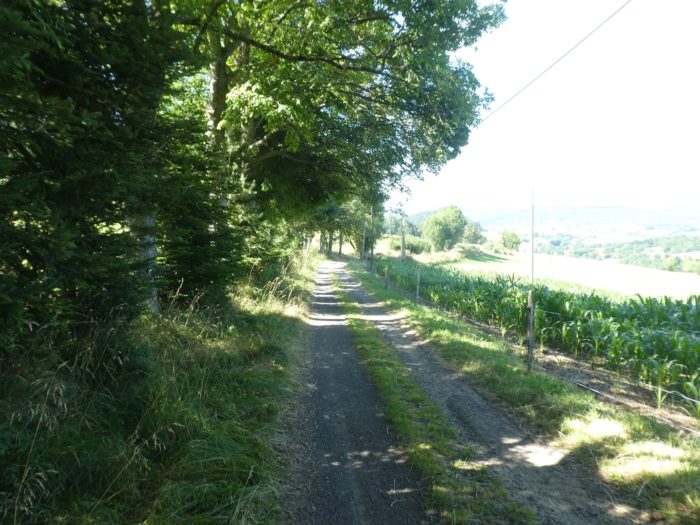 |
 |
| Here, the ash trees sometimes take over the maples. Soon you’ll see the village of Araules on the other side of the valley, nestled under the Suc of Clarel, a “suc” more spread out and less rounded than the others. |
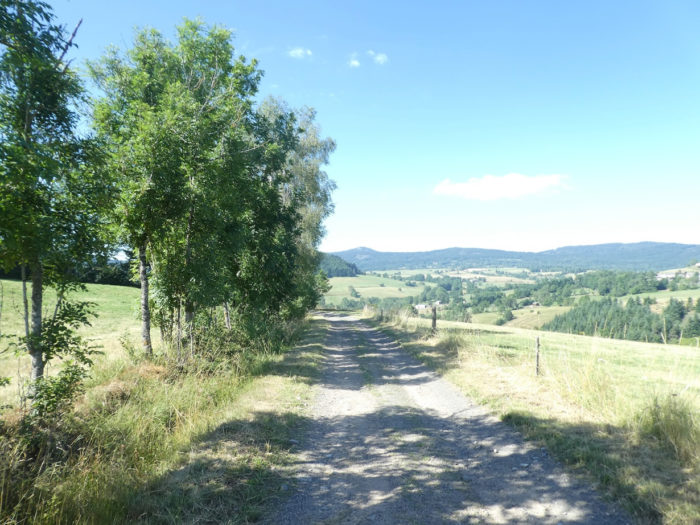 |
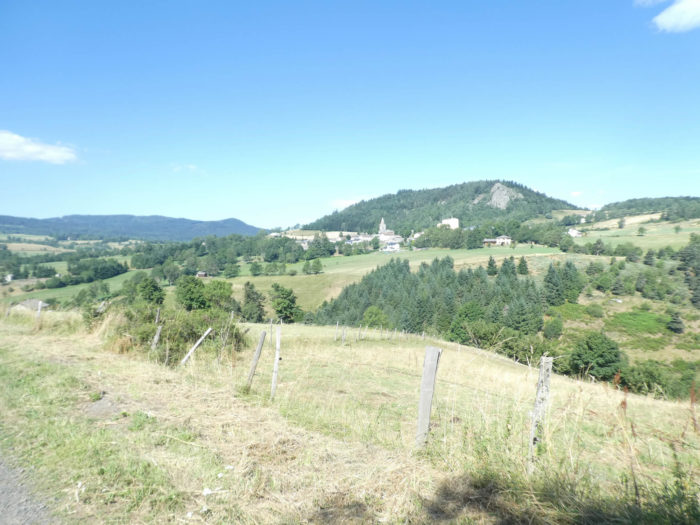 |
| Further down, the tar replaces the dirt. In front of you stands the Suc of Besset. |
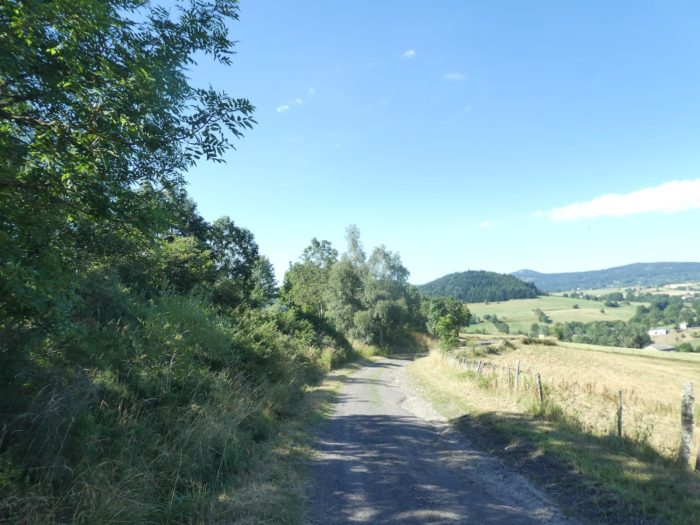 |
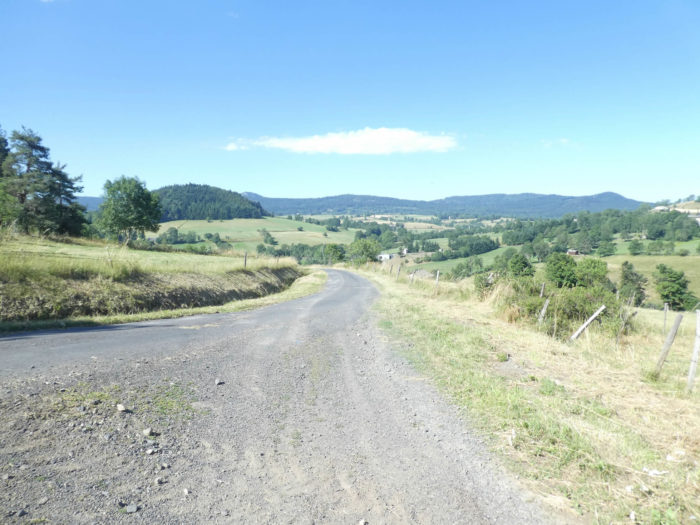 |
| The small road joins the departmental road at the bottom of the dale. |
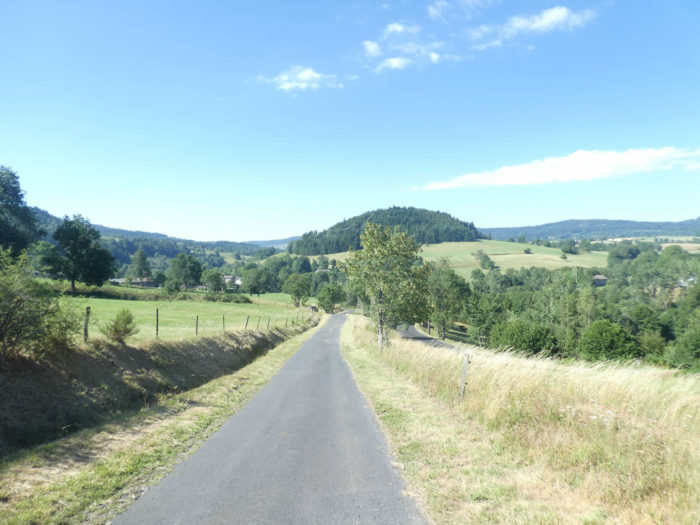 |
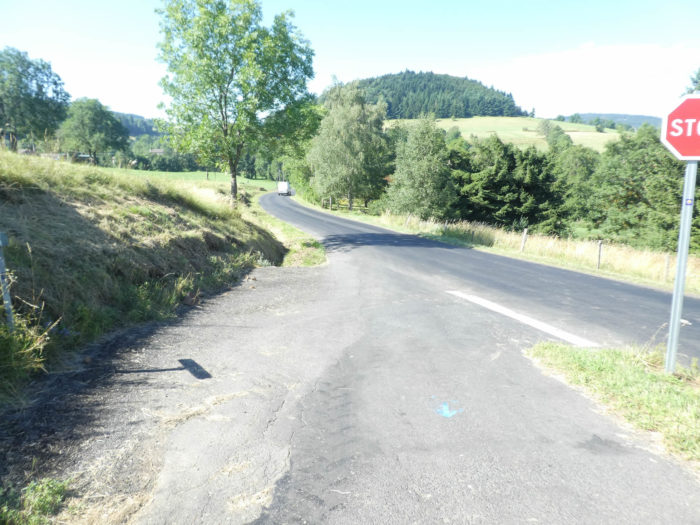 |
| It crosses there a bridge over the Auze brook. |
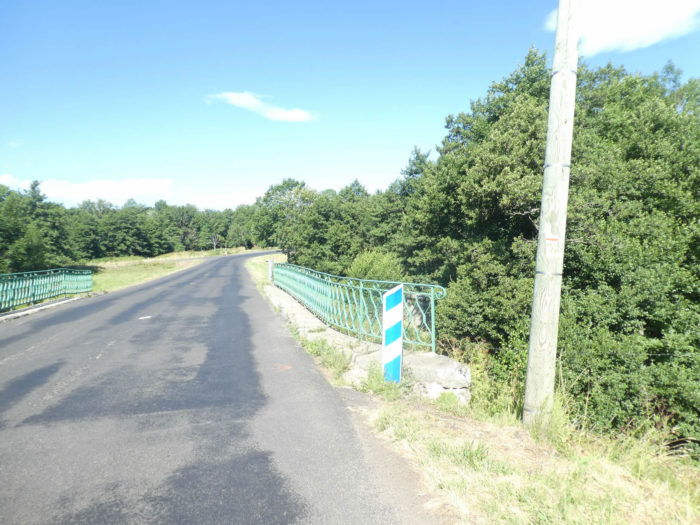 |
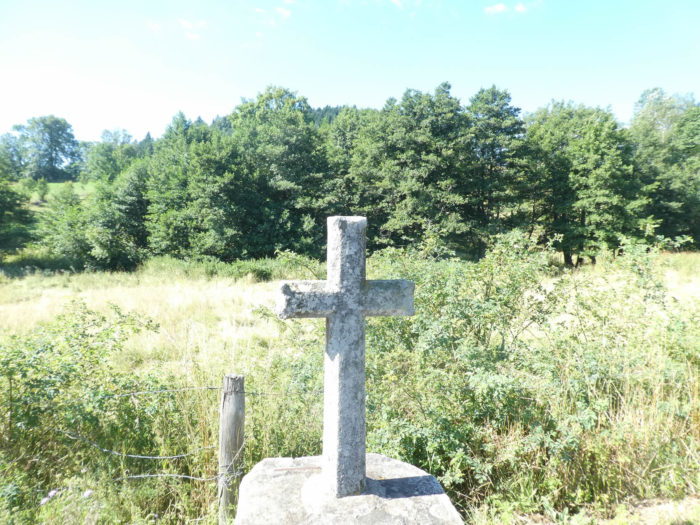 |
| GR path then follows the road for a few hundred meters, heads to a wastewater treatment plant, where large blades stir up the mud. |
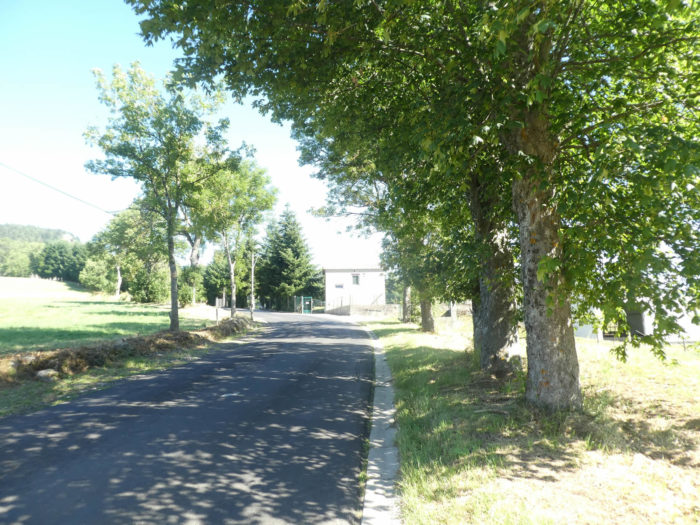 |
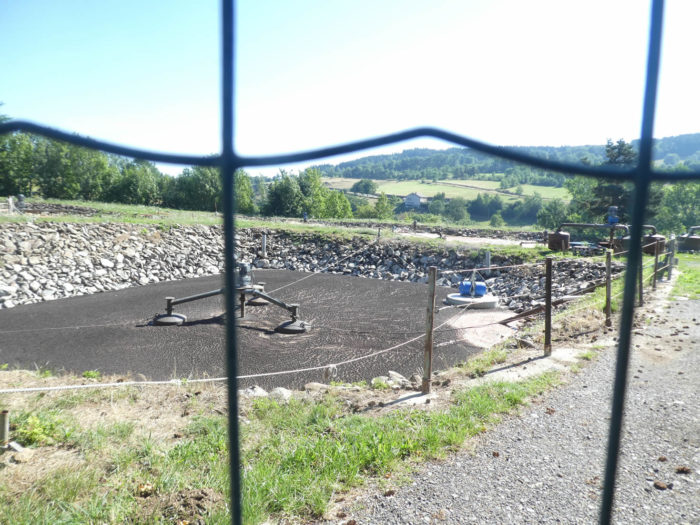 |
| The road begins to climb towards Araules. |
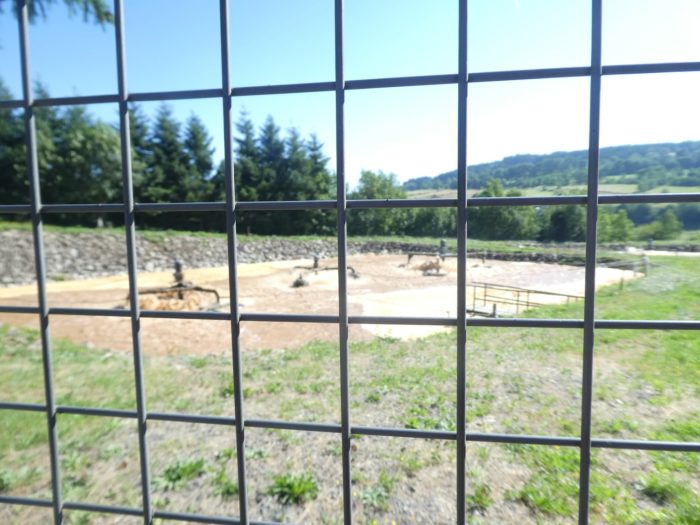 |
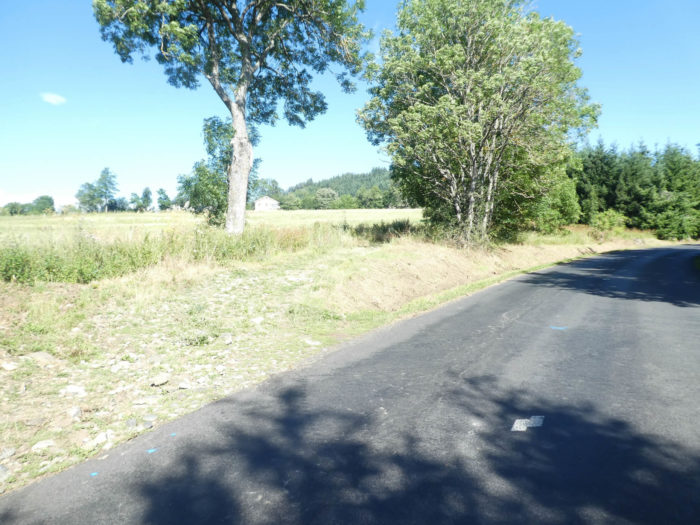 |
| Further up, a pathway lined with ash and maple trees climbs through the vegetation to the village. The climb is steep, almost 15%, but not long. |
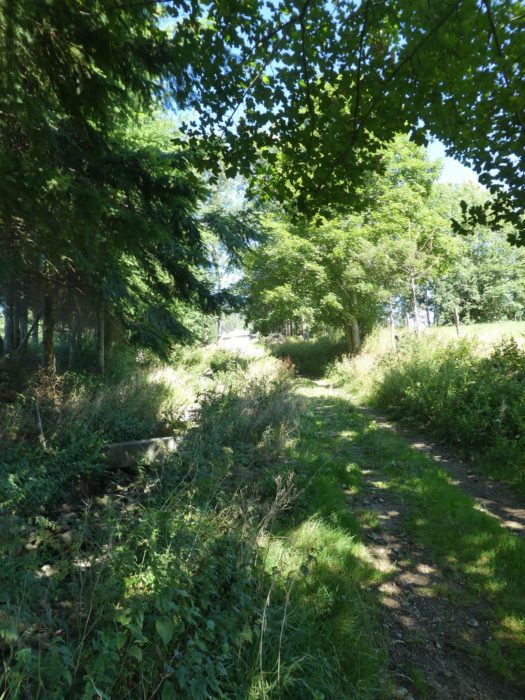 |
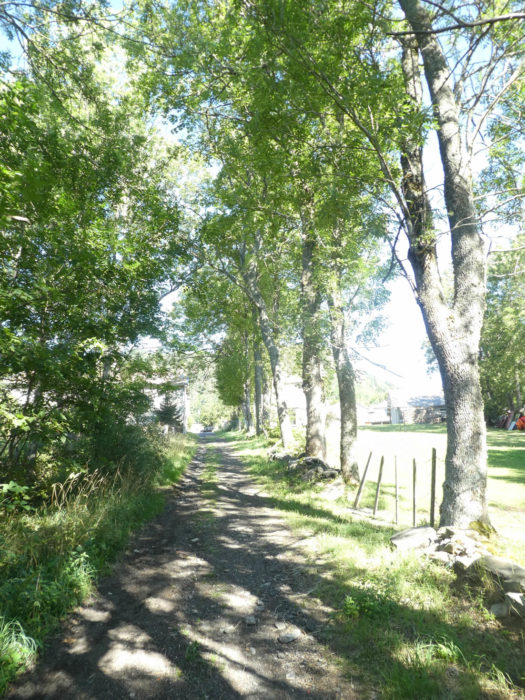 |
| The pathway then arrives in the center of Araules, at the foot of a “suc”. It is still a beautiful village, uniform, with its stone houses made to resist time. Volcanic stones are beginning to replace granites. Here, you are almost 1,000 meters above sea level and the climate is harsh in winter. Cross-country skiing is practiced in the region. |
 |
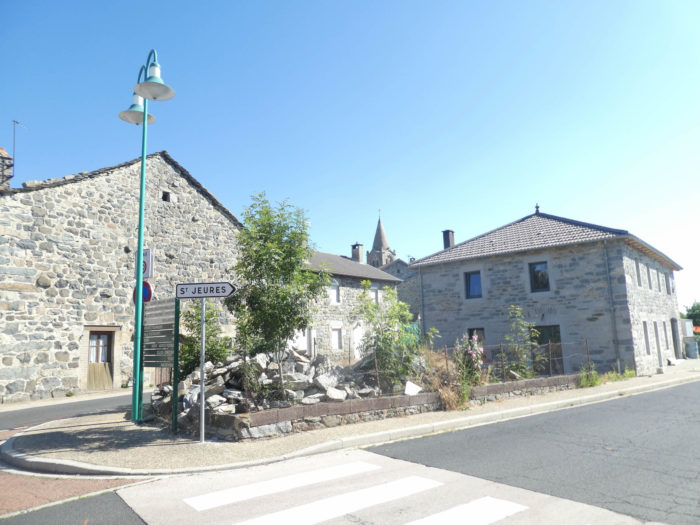 |
| At the exit of the village, a pathway descends steeply towards a small tributary of the Auze brook. |
 |
 |
| Here, in addition to ash and maple, there is also the presence of hornbeam shoots and beech. There are rare oak trees in the area. |
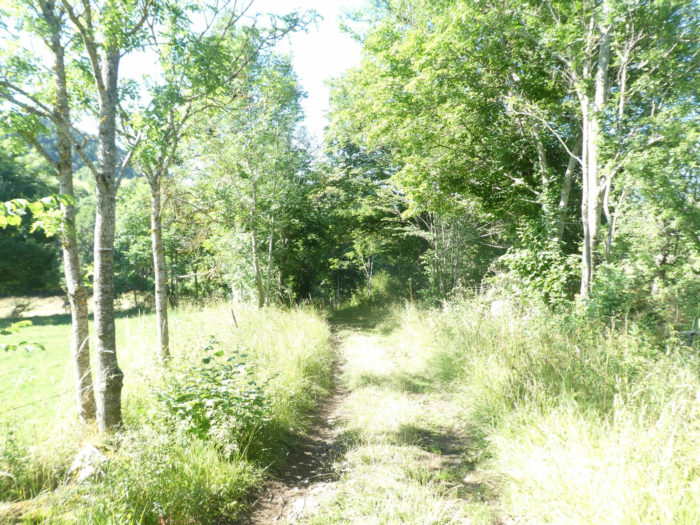 |
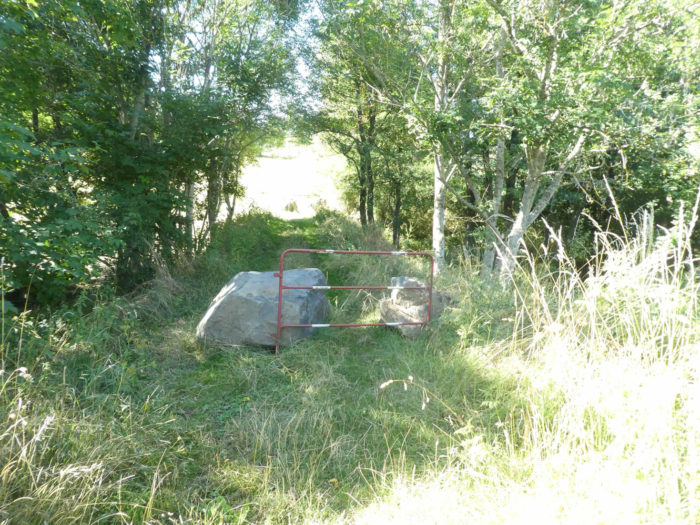 |
| The pathway climbs from the creek as steep as it descended, first in tall grass, then in the undergrowth on a field of pebbles, the few serious stones on the track during the day. |
 |
 |
| Shortly after, the pathway crosses a small side road. |
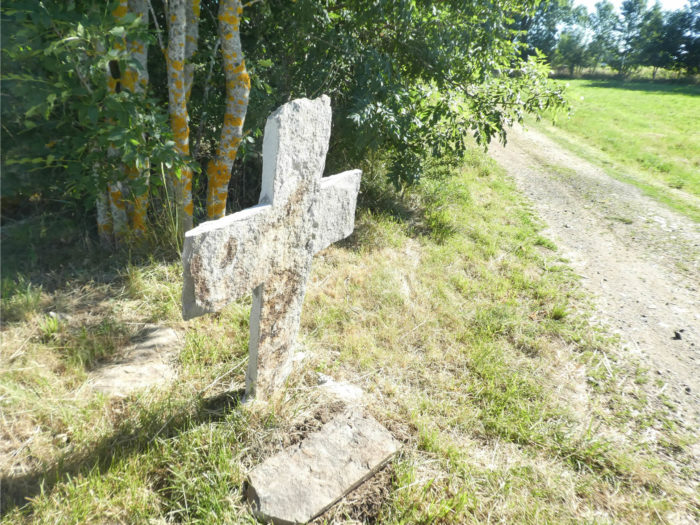 |
 |
| Then, it crosses the high pastures for a long time, gently sloping, brushing on the left side the Suc of Besset. |
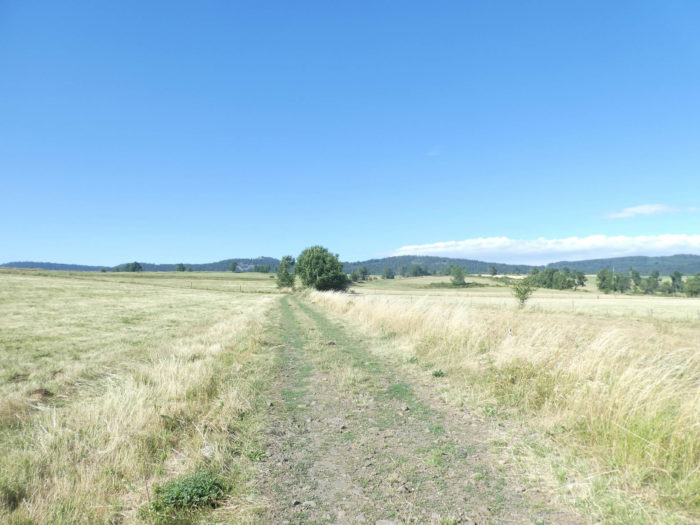 |
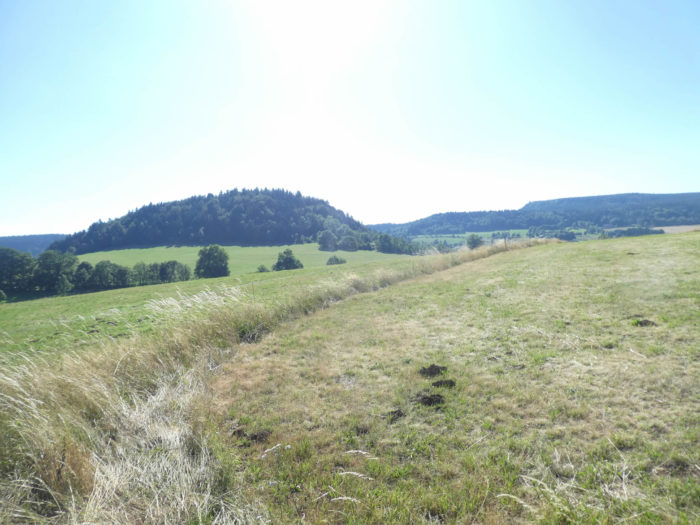 |
| On the horizon stands the Suc of Testavoyre, the highest in the Meygal range, culminating at 1407 meters in height. |
 |
 |
| Further afield, the maples and ash trees gradually return to the decor. |
 |
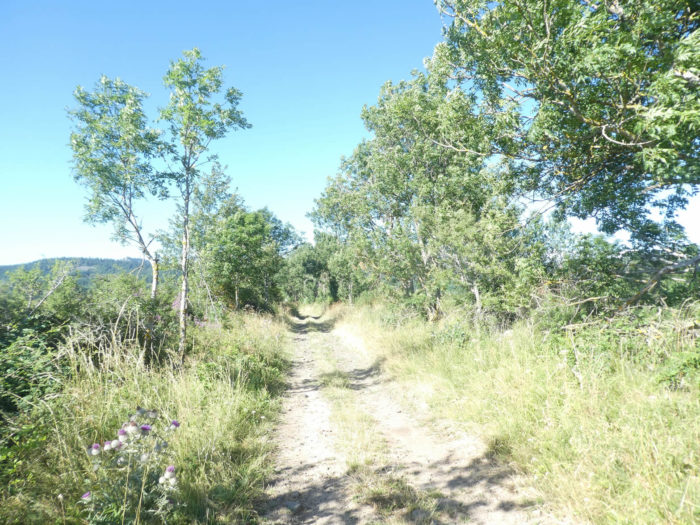 |
| Soon, after a cross carved in rough granite, the pathway reaches a departmental road at the entrance to the village of Pialleviales. |
 |
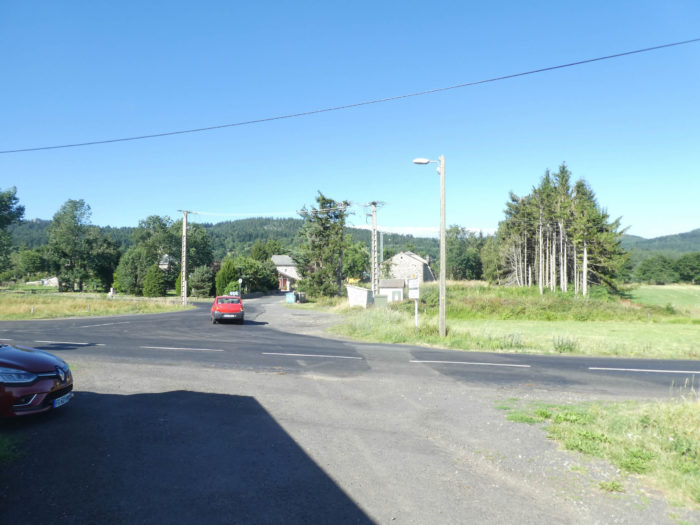 |
Section 5: In the “sucs” of Meygal.
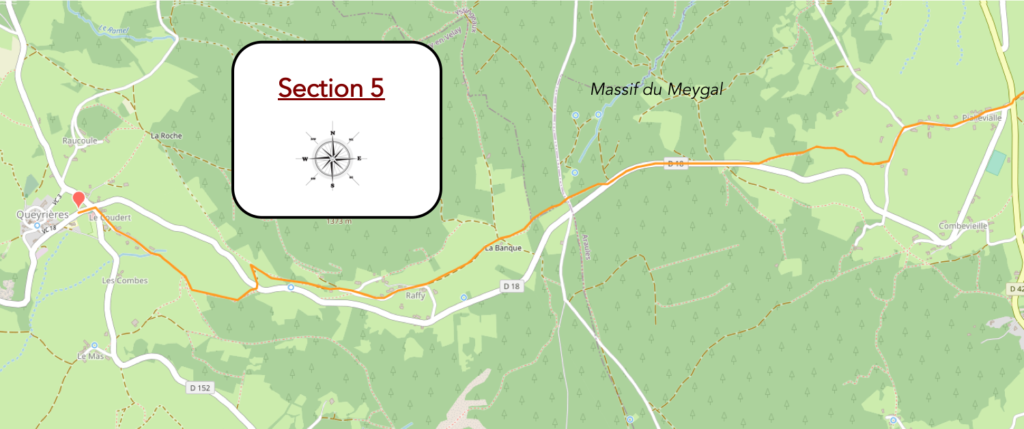
General overview of the difficulties of the route: consequent ups and downs.

| Here runs D18 road, which you have sometimes followed beyond Tence and which heads towards the northern domain of Meygal, then to Queyrières. |
 |
 |
| For its part, GR path enters the village. Here, you are at 1,100 meters above sea level and GR path will climb another nearly 200 meters of elevation. |
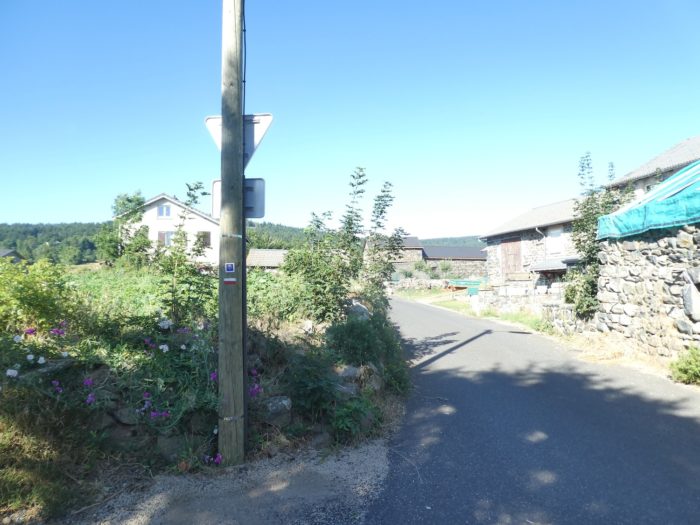 |
 |
| The village is very large, on a small plain. The houses are all remarkable. Here, basalt became the basis for these sealed stone constructions. I’s just magic here. |
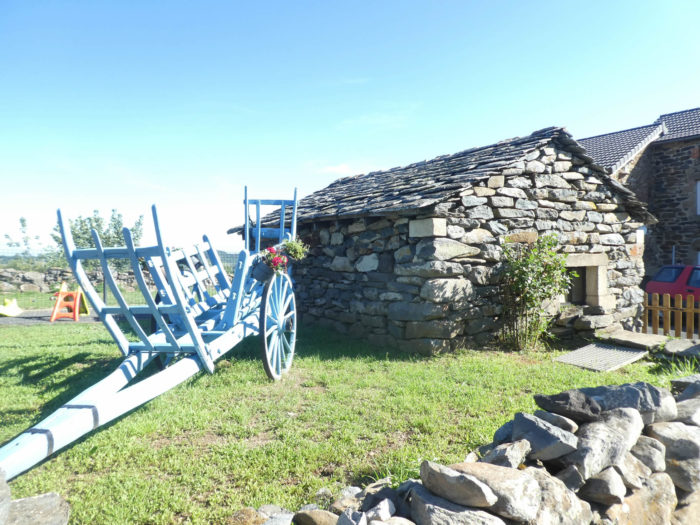 |
 |
| At the exit of the village, GR path leaves the small road and takes a pathway that begins to climb in the undergrowth. |
 |
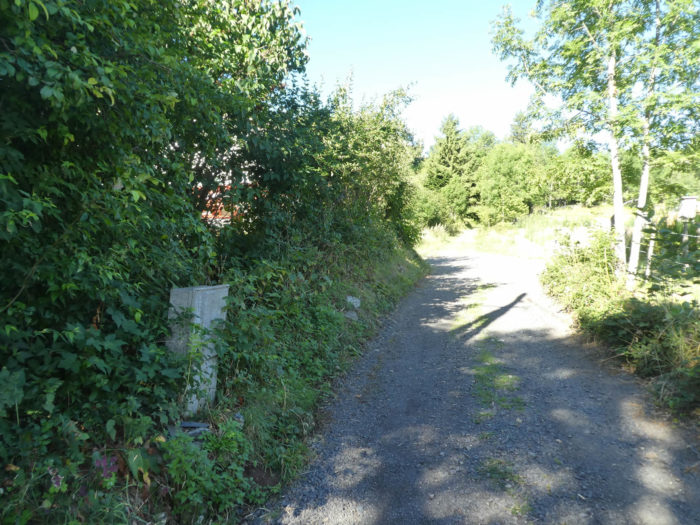 |
| Here, the slope will quickly approach 15% and for a good kilometer. The pathway is narrow, sometimes stony, in the stunted trees, where you’ll find ashes and maples, but also some hornbeams and beeches. |
 |
 |
| Nature is as wild as you want, sometimes with a wall made of coarse granite stones. In a gap, you may see the Suc of Testavoyre stand out on the horizon. |
 |
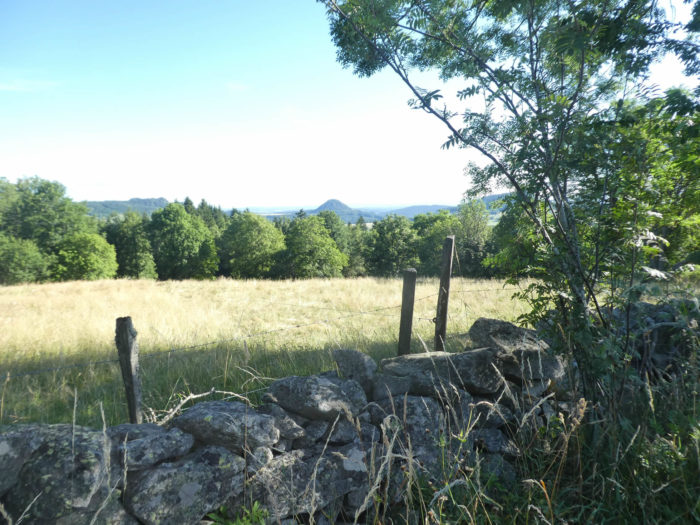 |
| Further up, the pathway comes out of the largely alpine vegetation. Here you’ll see real fields of pink willow herb. |
 |
 |
| The pathway then finds again the departmental road which passes just above. GR path will then follow the road in the fir trees of the great forest of Meygal. |
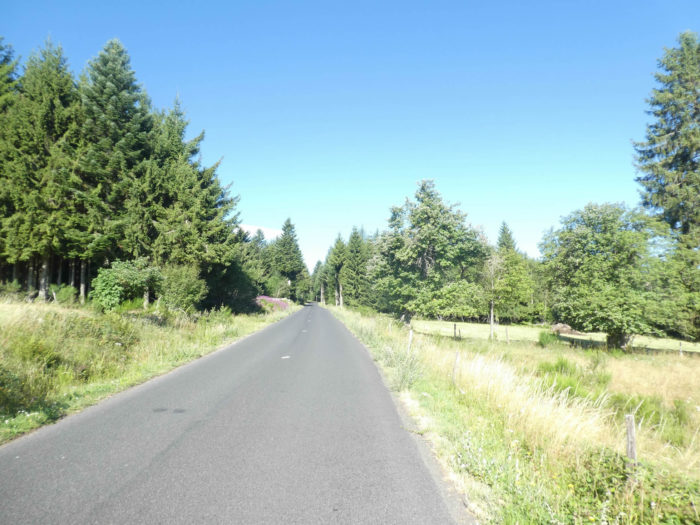 |
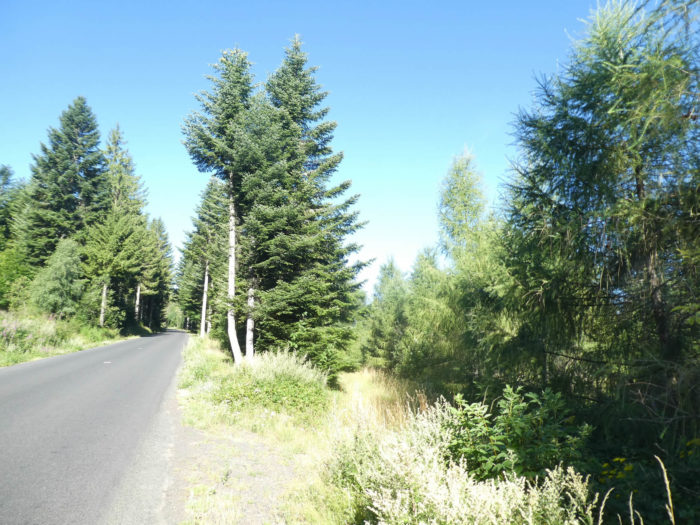 |
| GR path then follows the road for a few hundred meters. Further up, the slope becomes gentler. Here you’ll find Douglas tees, white firs. Hardwoods have virtually disappeared. |
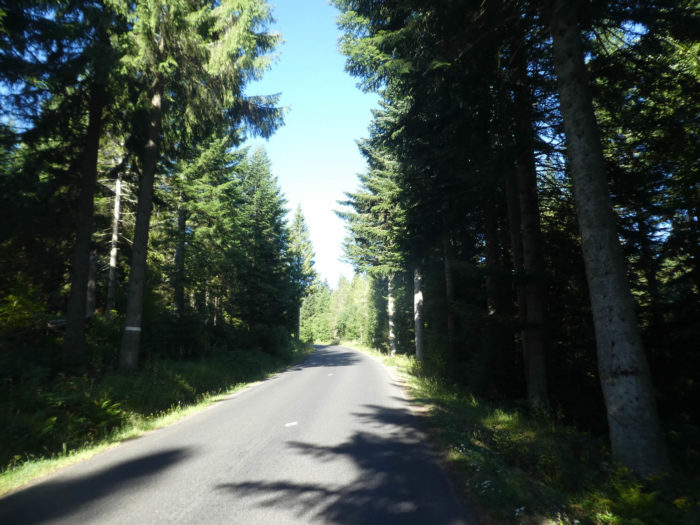 |
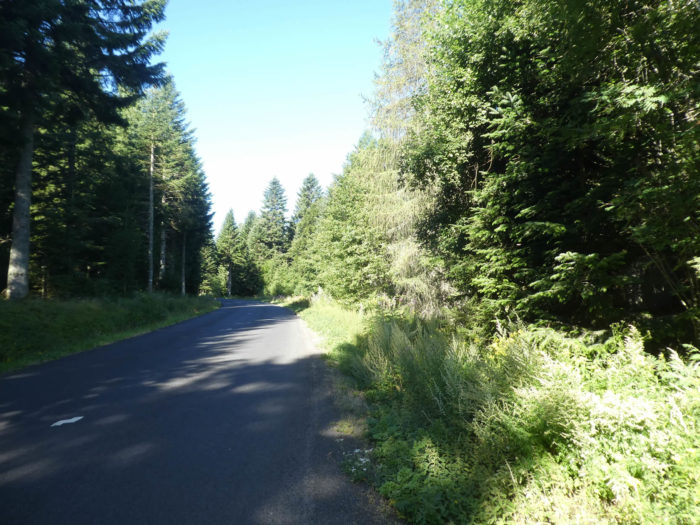 |
| You have to be careful on the way, because soon a pathway leaves the road which slopes up in the fir trees, always as straight, as well arranged. |
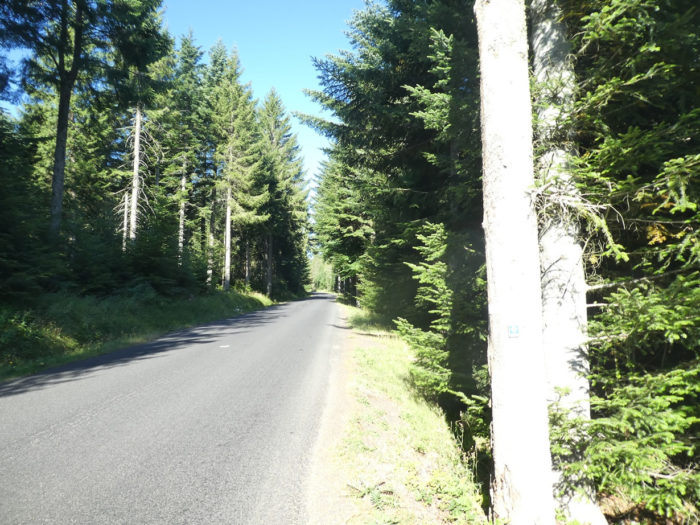 |
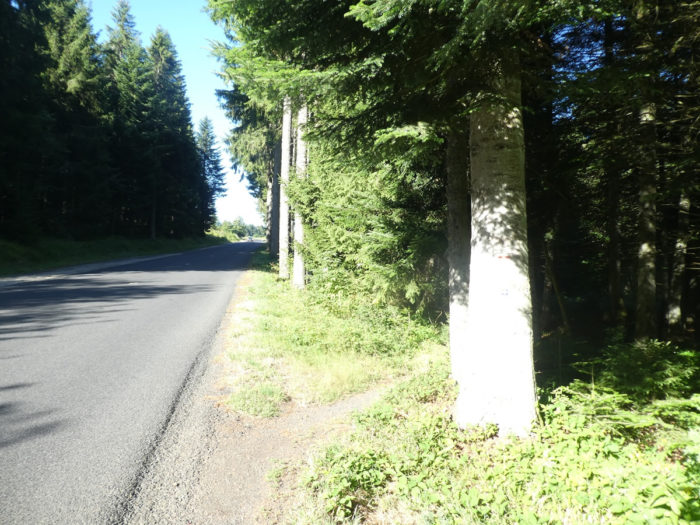 |
| If you miss the fork it is not dramatic because you will find the track back higher. But it is always more pleasant to walk on a beautiful pathway than on the paved road. |
 |
 |
| Further up, the pathway crosses a small secondary road. You have reached here the northern domain of Meygal. |
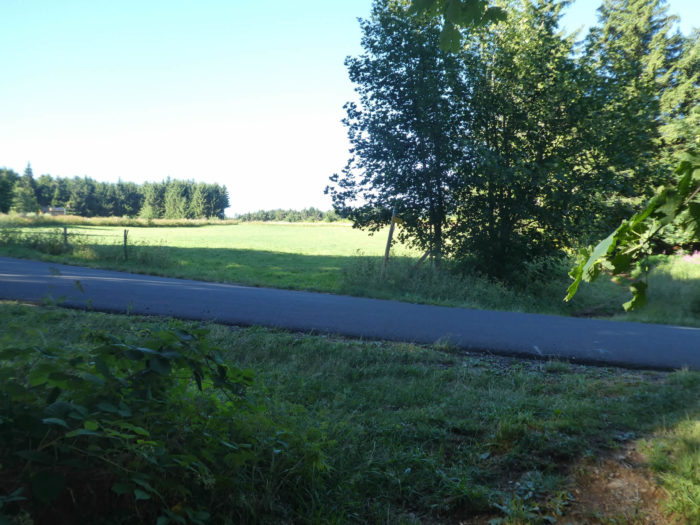 |
 |
| At a place called 4 Routes, the pathway moves away from the main road to climb into the dense forest. There is still a small marked slope here, but it does not last. |
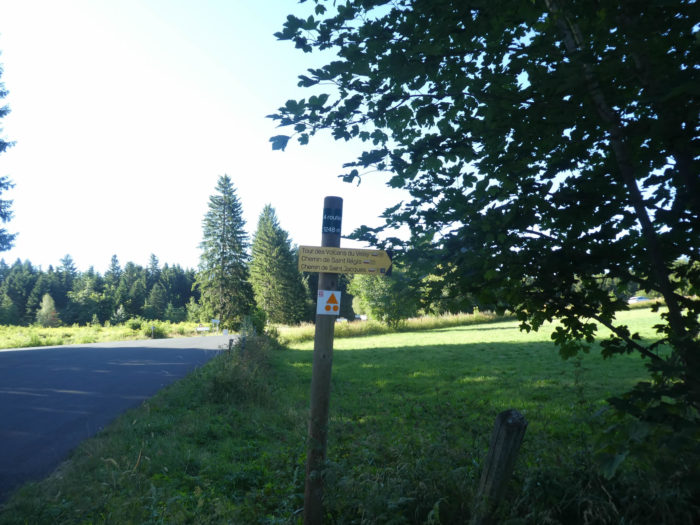 |
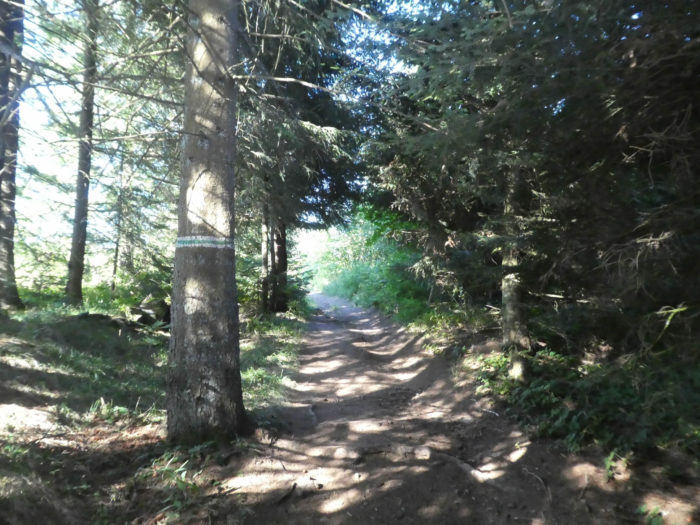 |
| Then, the pathway leaves the forest in the broom, rosehips, boxwood and tall grass. It then heads to a place called La Banque. |
 |
 |
| A few more hundred meters in the tall vegetation, and the pathway gets in Raffy, the roof of the stage. At 1,300 meters above sea level. |
 |
 |
In Raffy 3 GR are present. First there is the great loop of GR40 track which makes the great tour of the volcanoes of Velay. There is also GR430 track, the Chemin de St Régis, which has the same objective, in a more inland loop, and of course GR65 path, our track.

| From here, from these beautiful stone houses, the view is incredible over the Puy-en-Velay basin, still dominated by many “sucs”. In front of you, you have the Suc of Mézère near Queyrières, and further on the Suc of Chiroux. |
 |
 |
| Beyond Raffy, GR path descends on a small road to a fork. Do not go on GR40 path. Our track is still GR65 path, which runs jointly with GR430 track to Queyrières. |
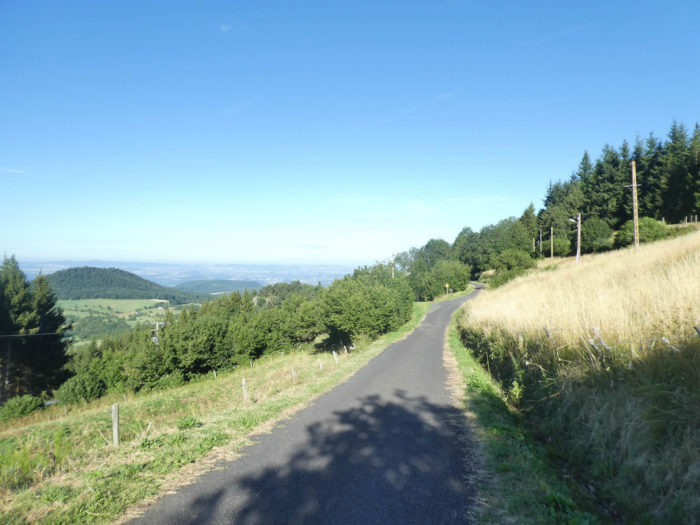 |
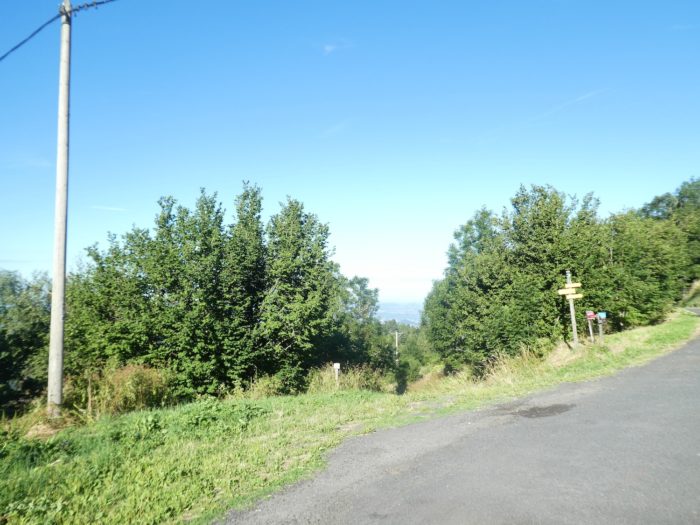 |
| GR path will descend here for more than a kilometer on a steady slope, between 10% and 15%. The grassy pathway quickly joins the departmental road. |
 |
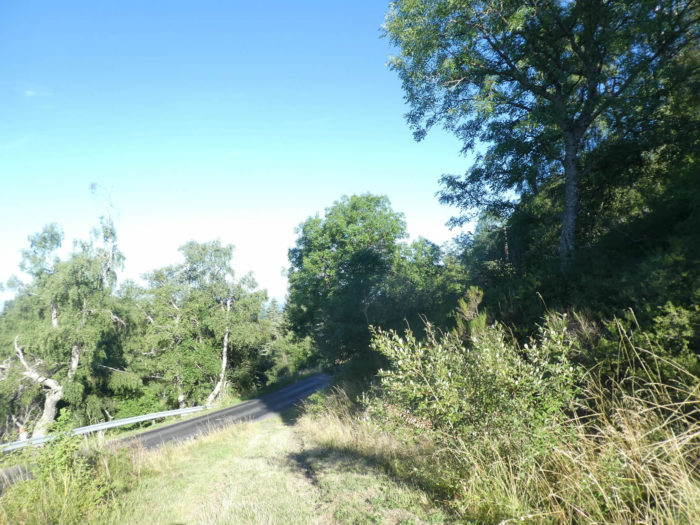 |
| It follows the road for several hundred meters. Along the way, fresh water flows from the fountain. |
 |
 |
| It follows the road until, in front of you, you see the village of Queyrières nestled in the middle of the “sucs”. |
 |
 |
| Further down, GR path leaves the paved road for a narrow lane that slopes down into the forest. |
 |
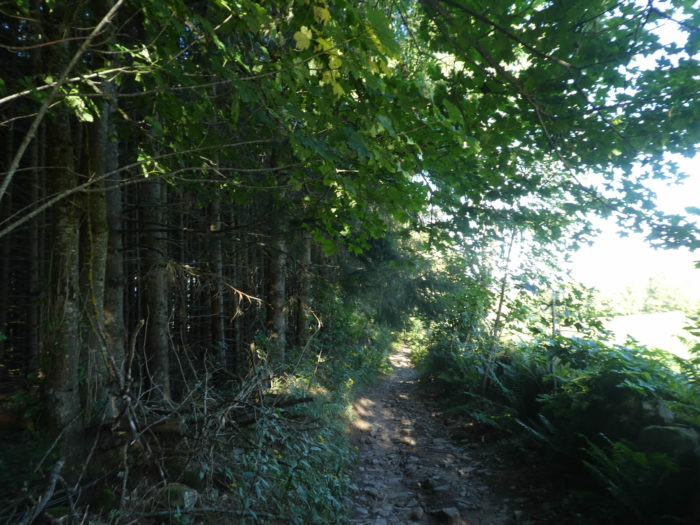 |
| When the space opens up, you are getting closer again to the “sucs” |
 |
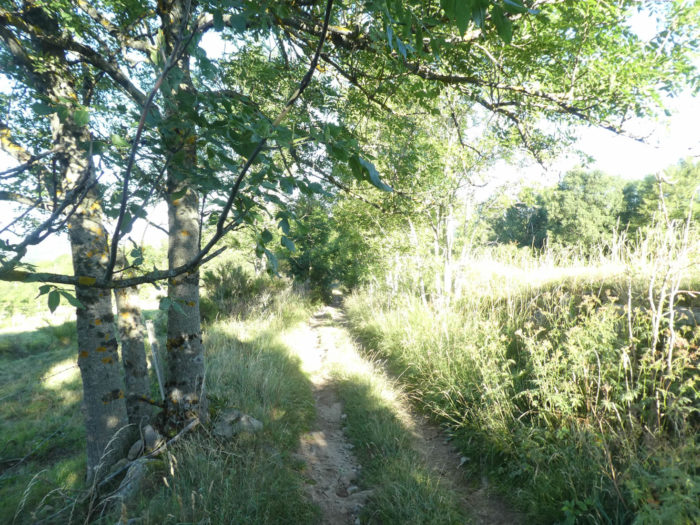 |
| It is a small pathway that slopes down along the fir forest, under maples, ashes and small hornbeams, in tall grass. |
 |
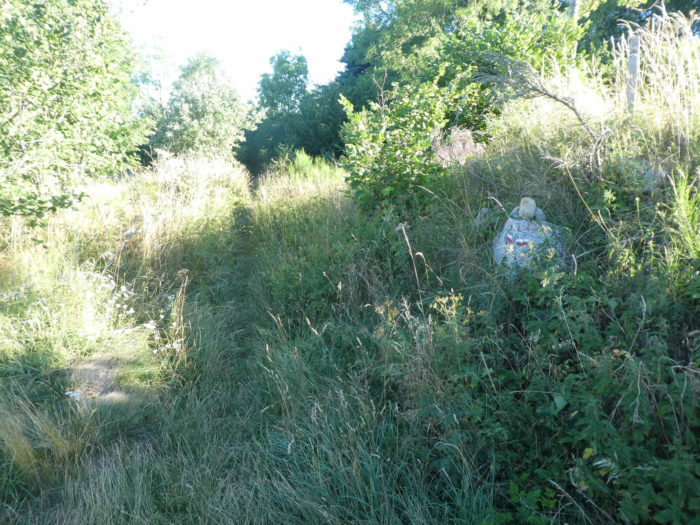 |
| At the bottom of the descent in the undergrowth, the slope is gentle and GR path arrives in Queyrières on a small paved road. |
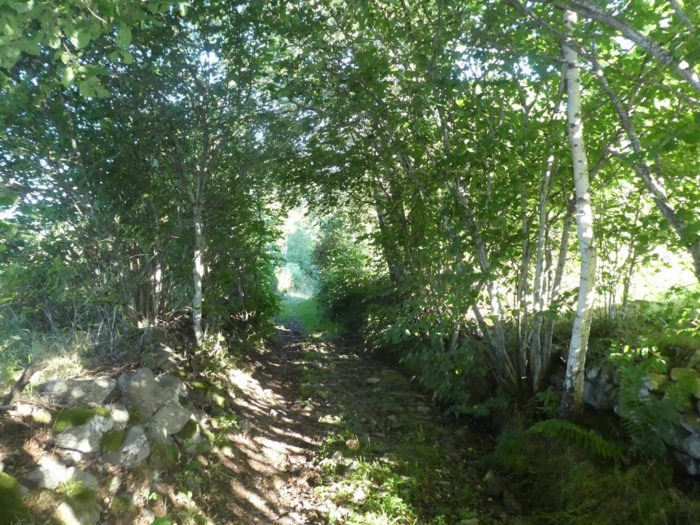 |
 |
| Queyrières is the major rallying point of Meygal. |
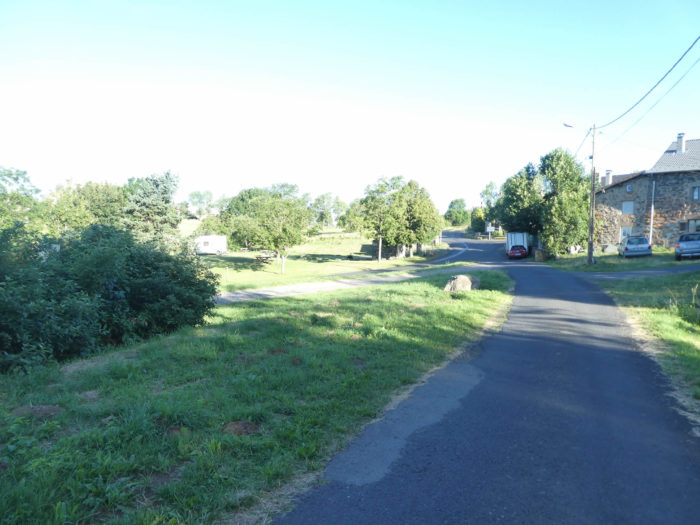 |
 |
| The magnificent stone village with its slate roofs is backed by a plucked rock on which a cross is nestled, a little away from the road. |
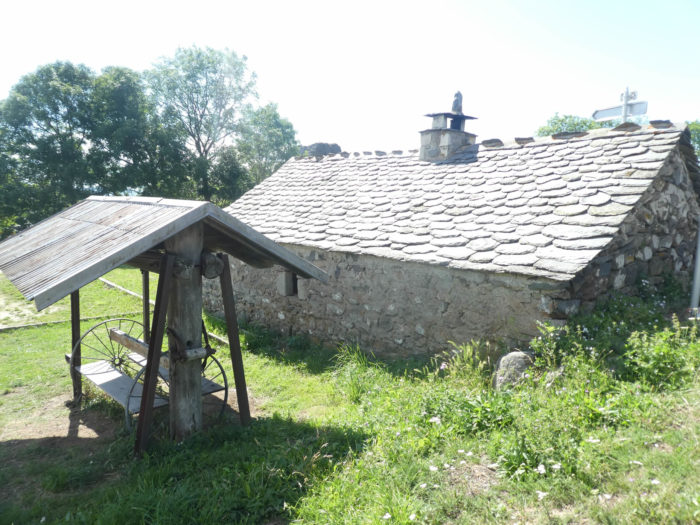 |
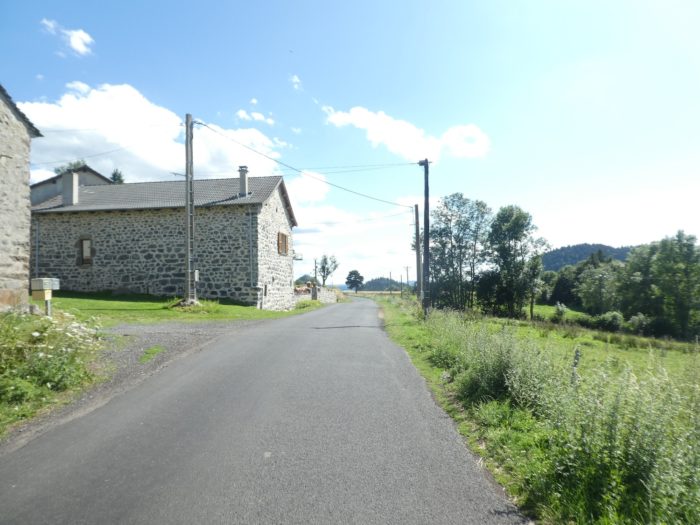 |
| The volcanic stones burst with all their brilliance in this magnificent and peaceful hamlet. |
 |
 |
Lodging
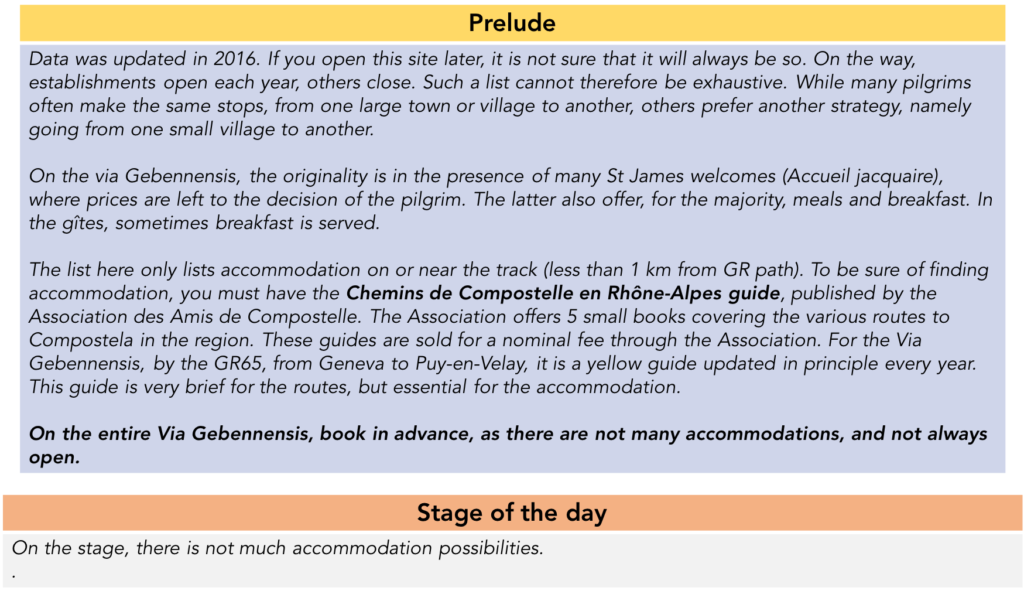
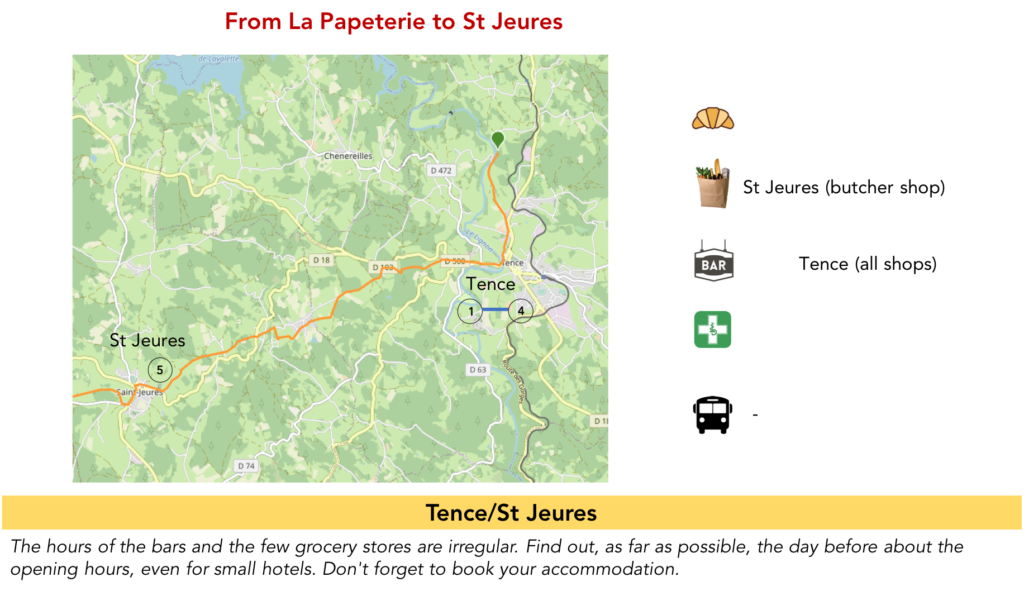

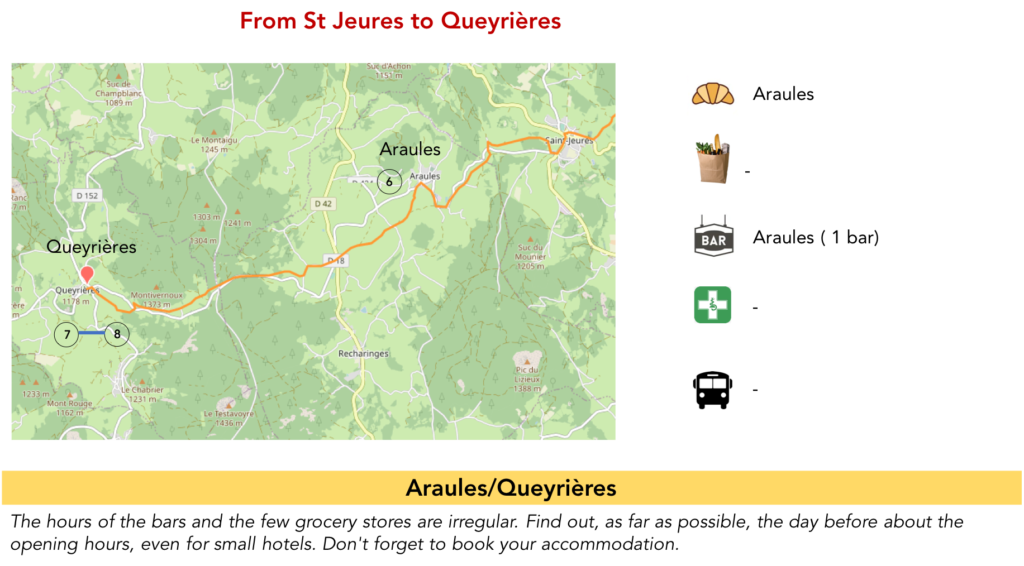
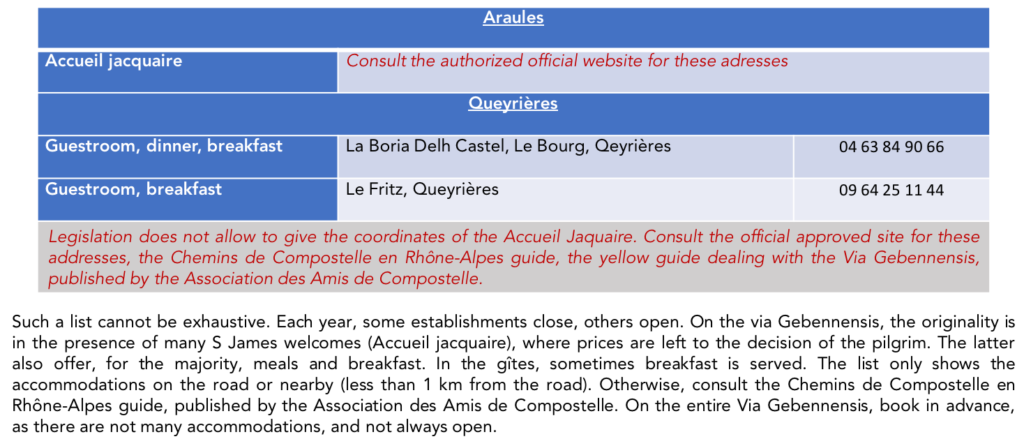
Feel free to add comments. This is often how you move up the Google hierarchy, and how more pilgrims will have access to the site.
|
 |
Next stage : Stage 14: From Queyrières to Puy-en-Velay |
|
 |
Back to menu |








